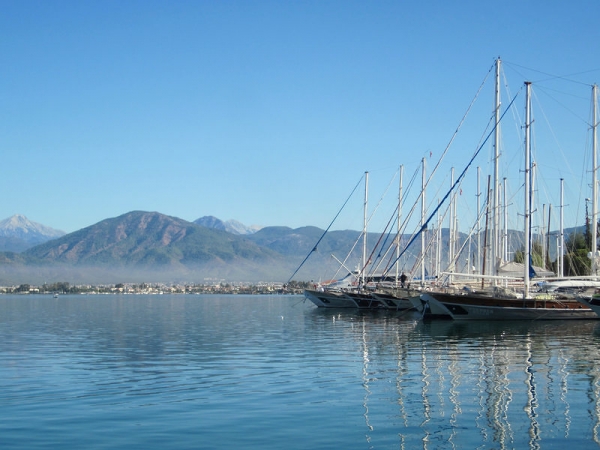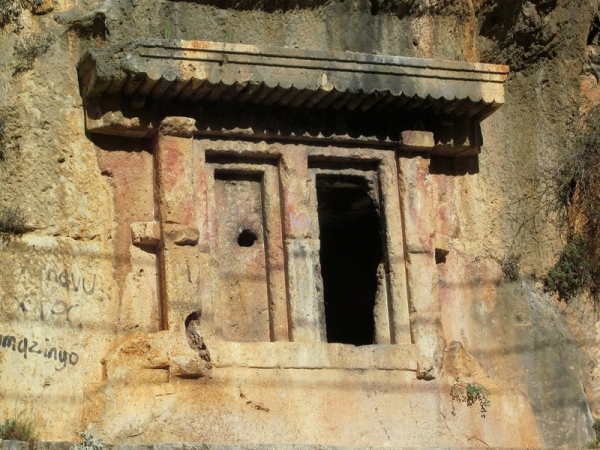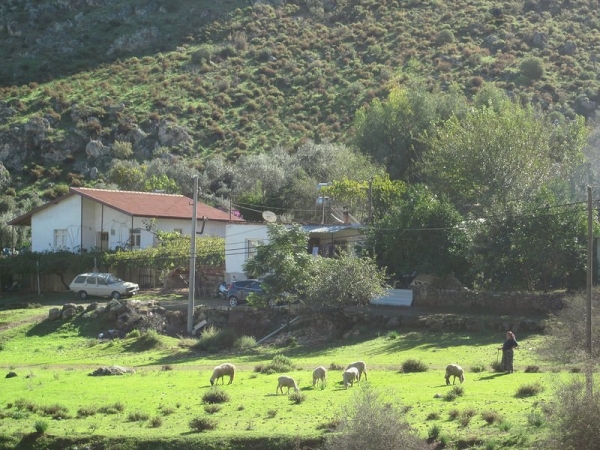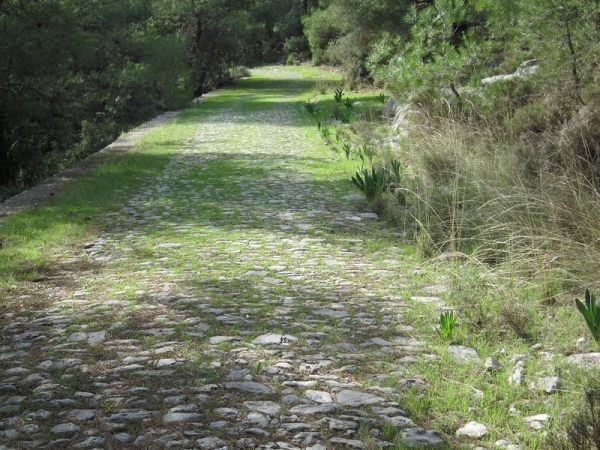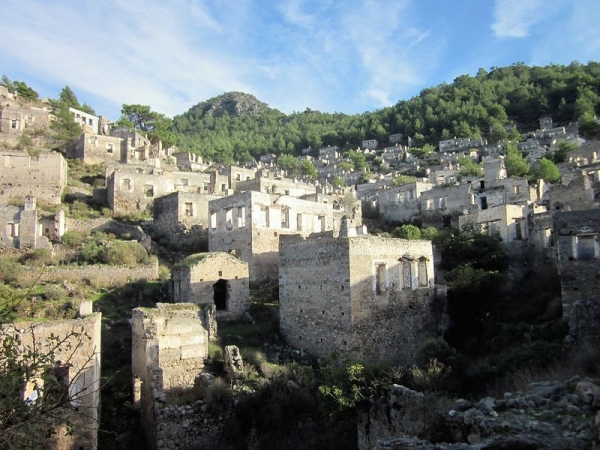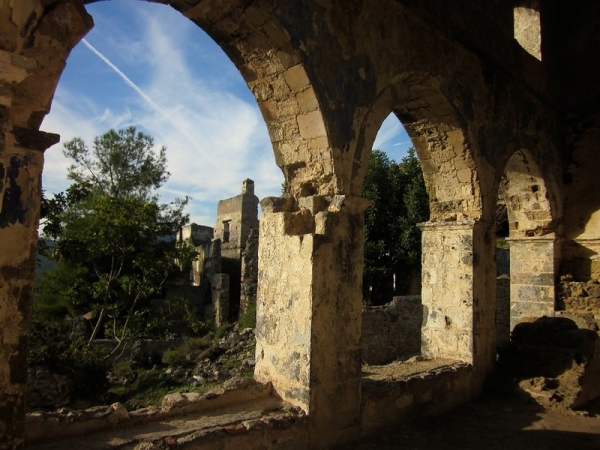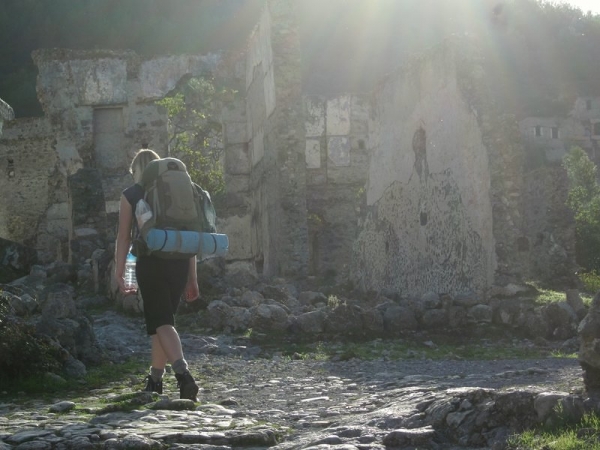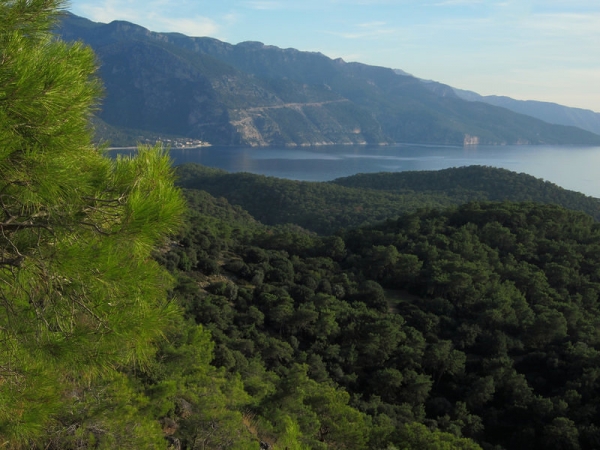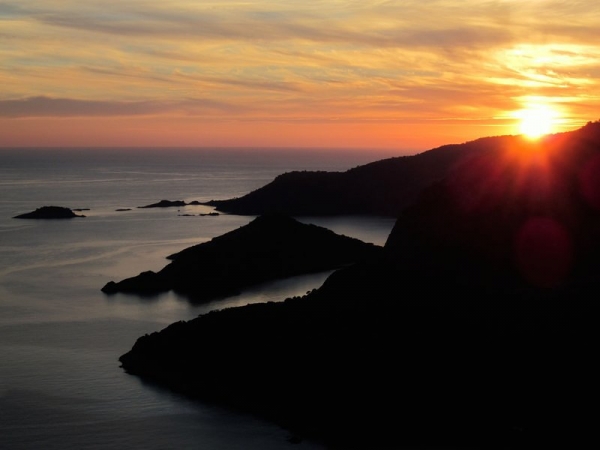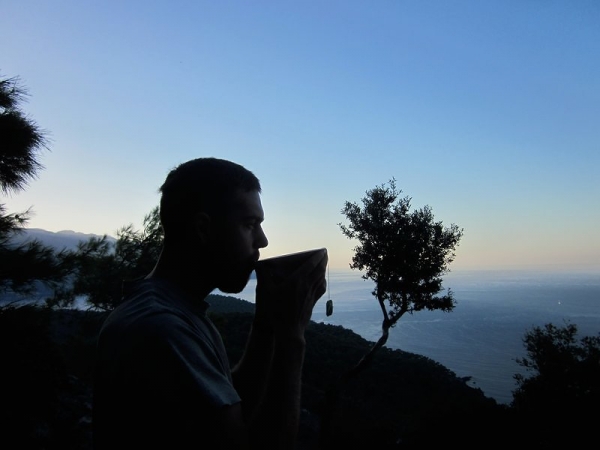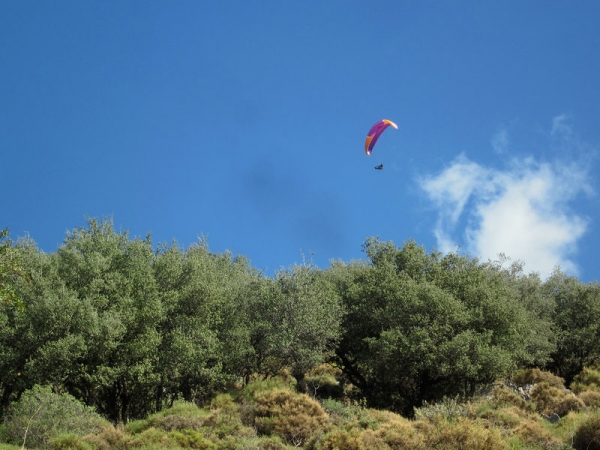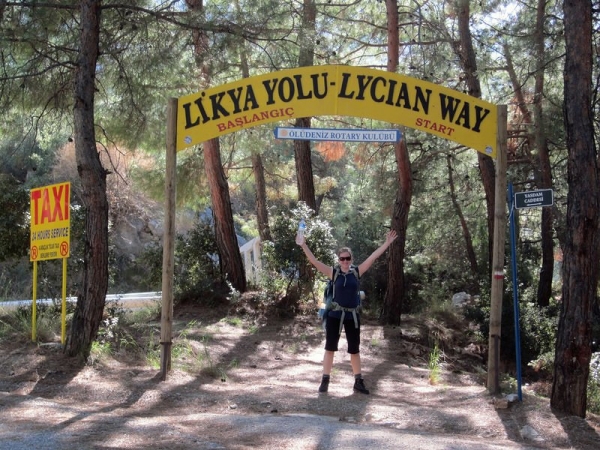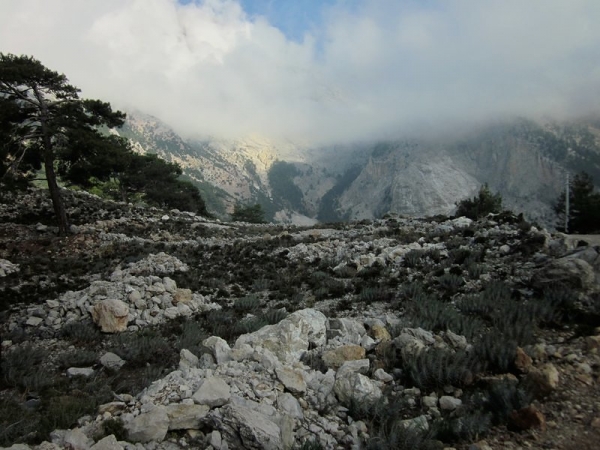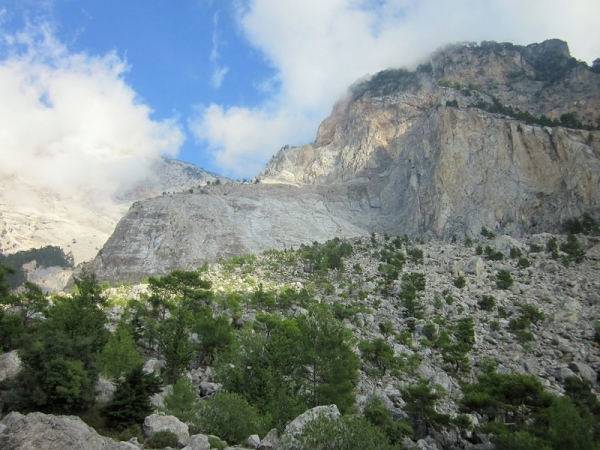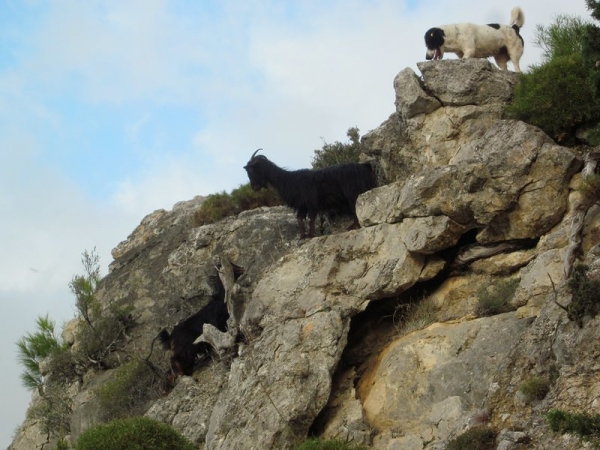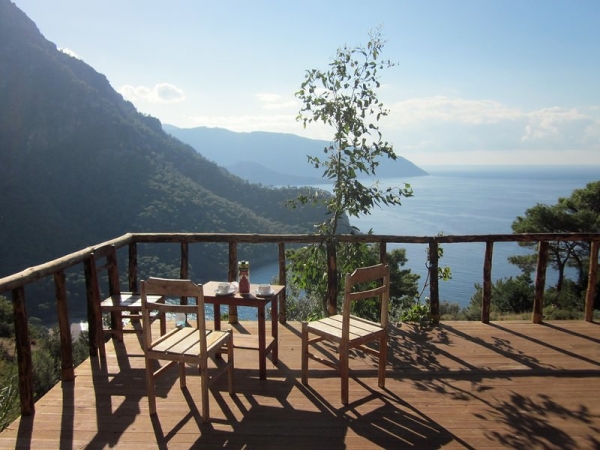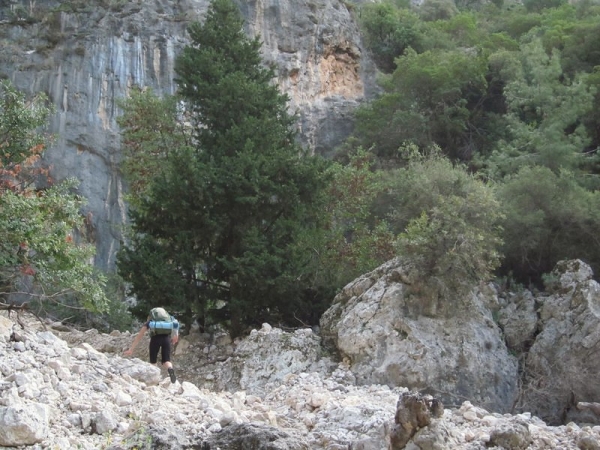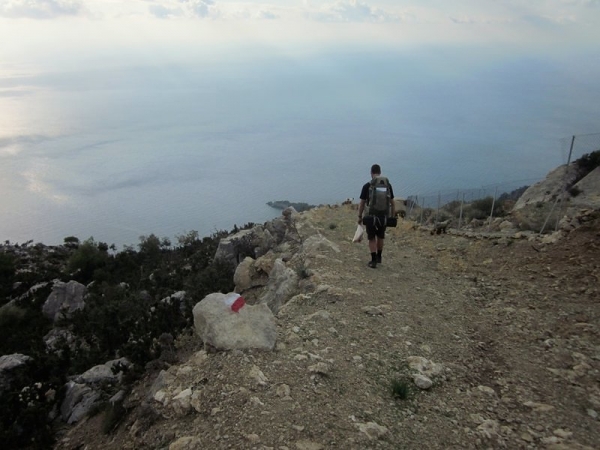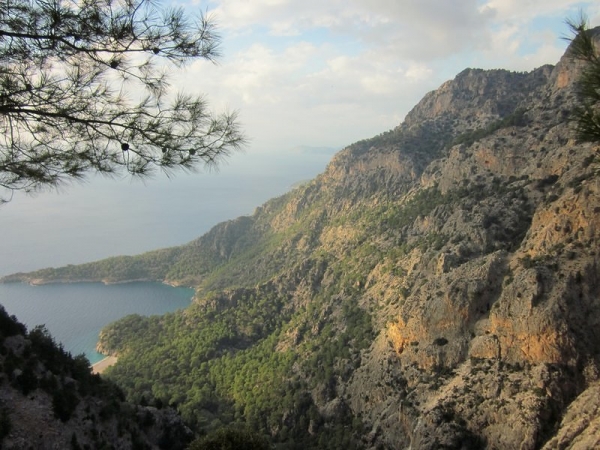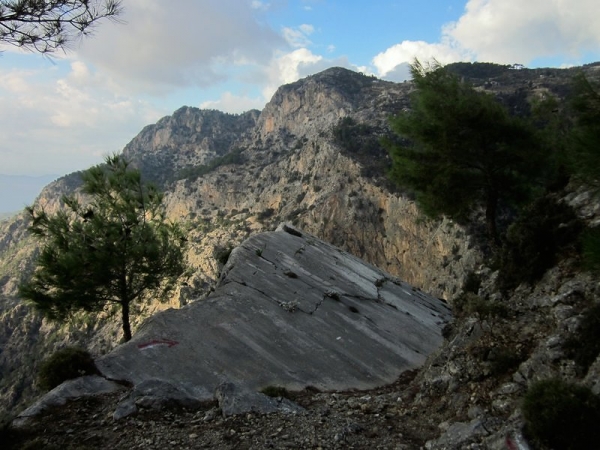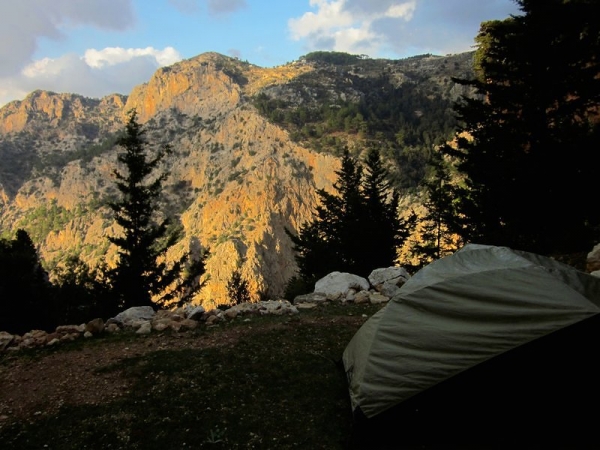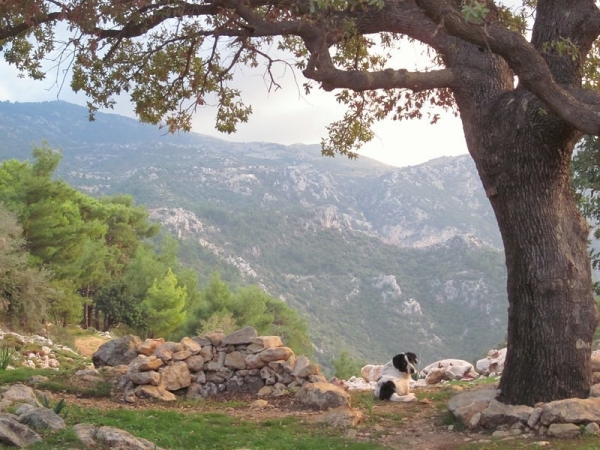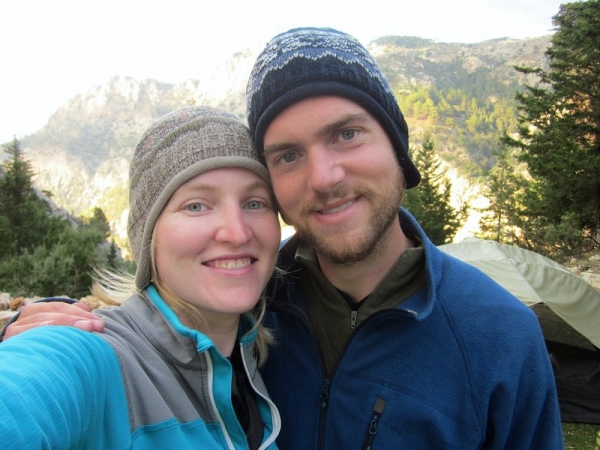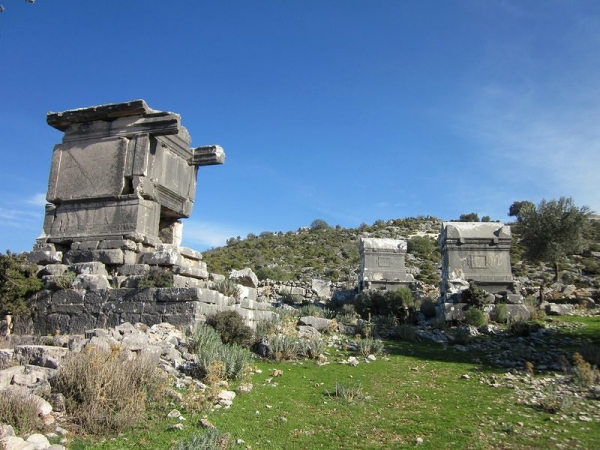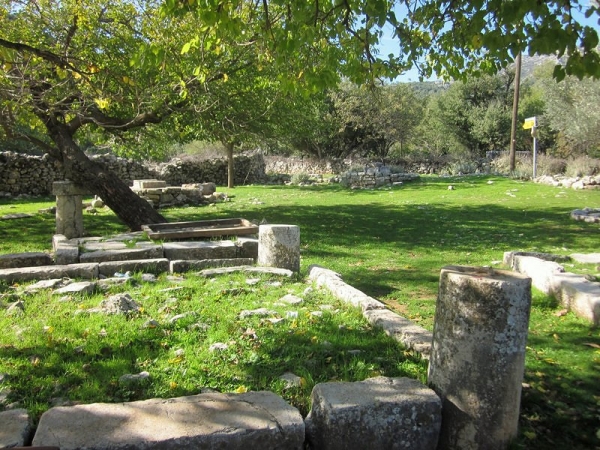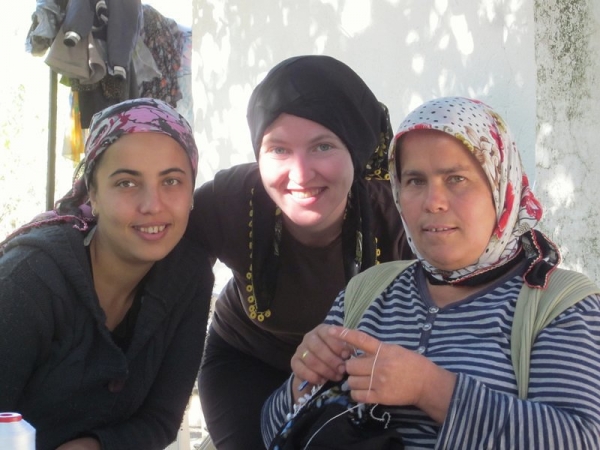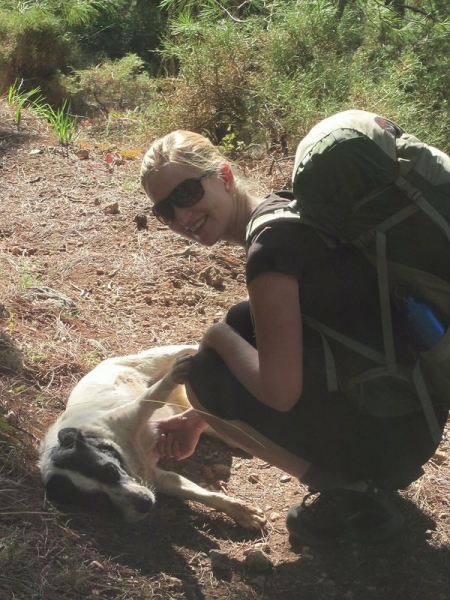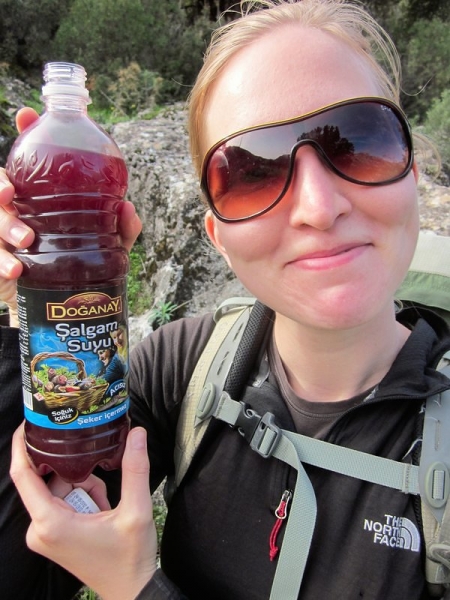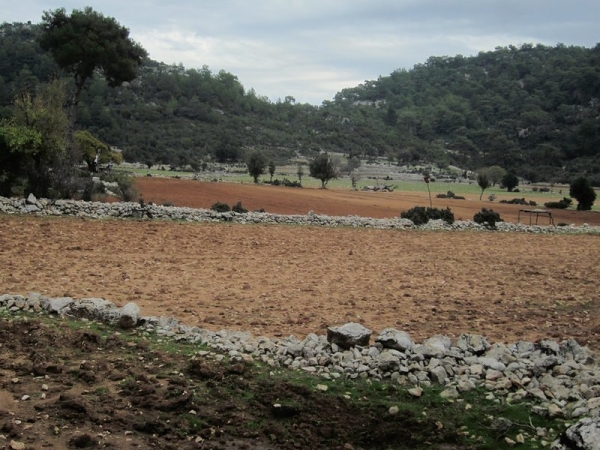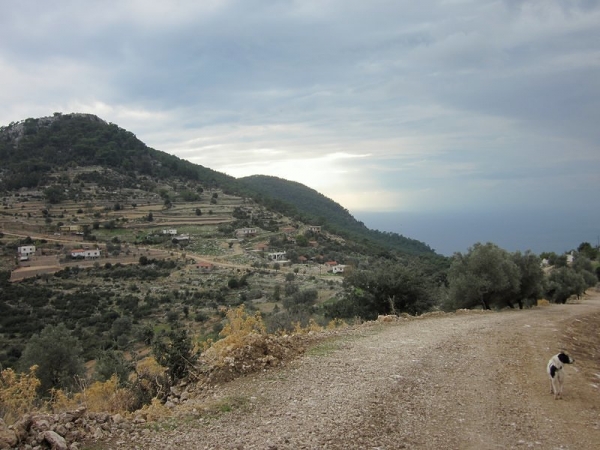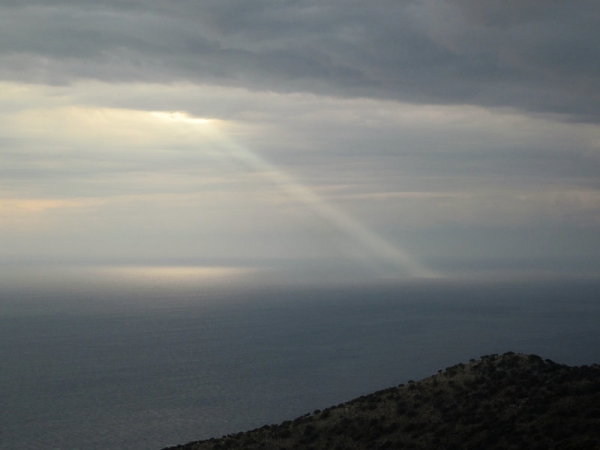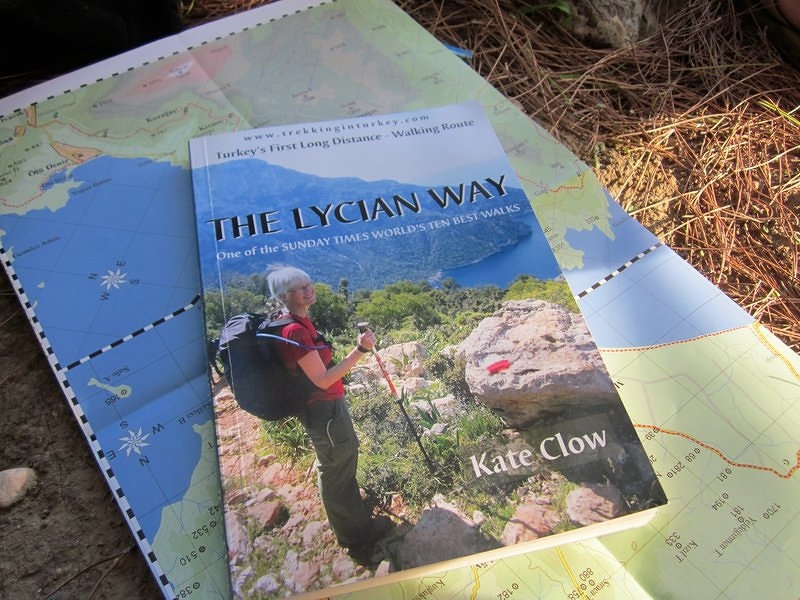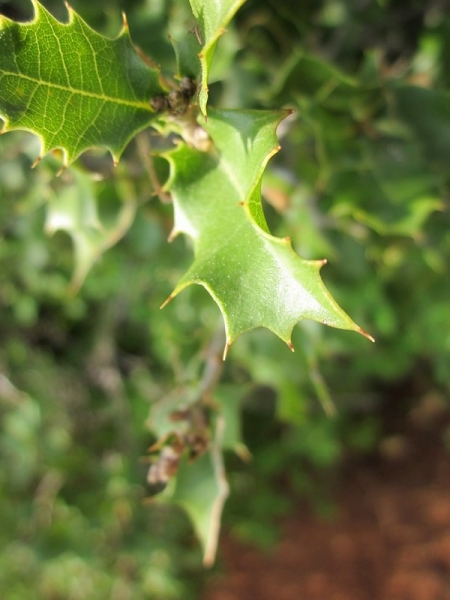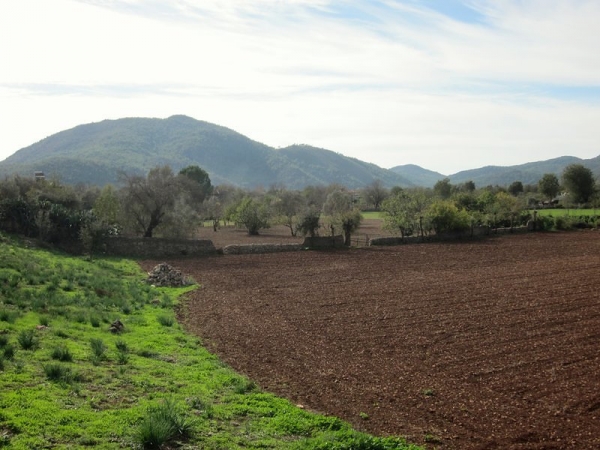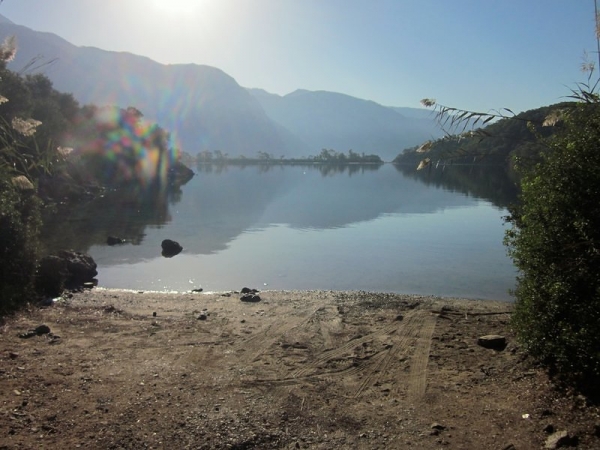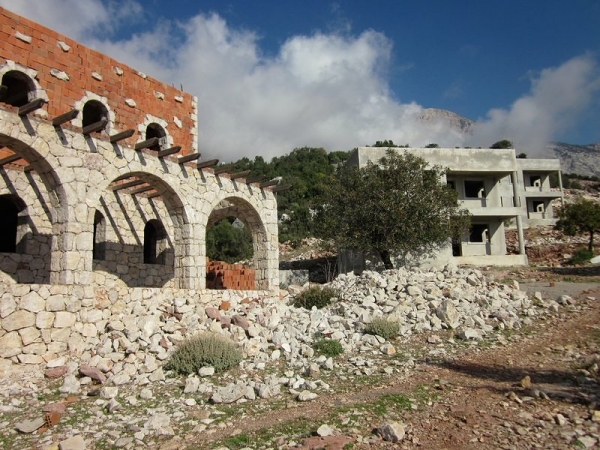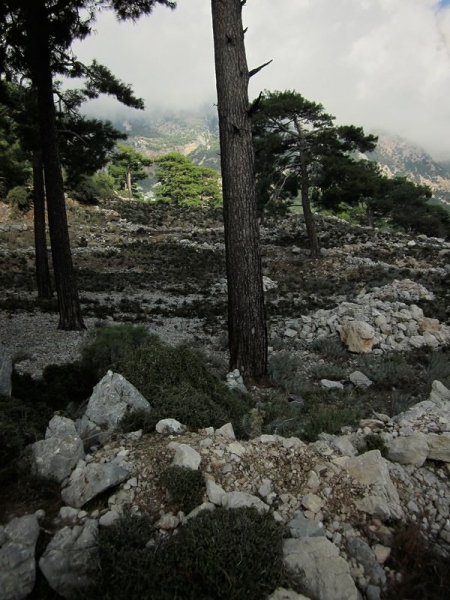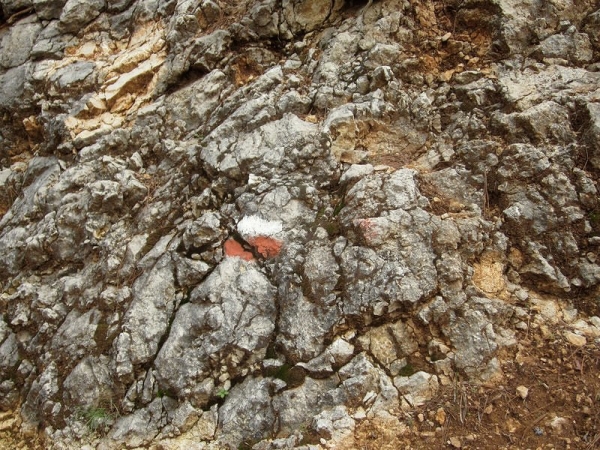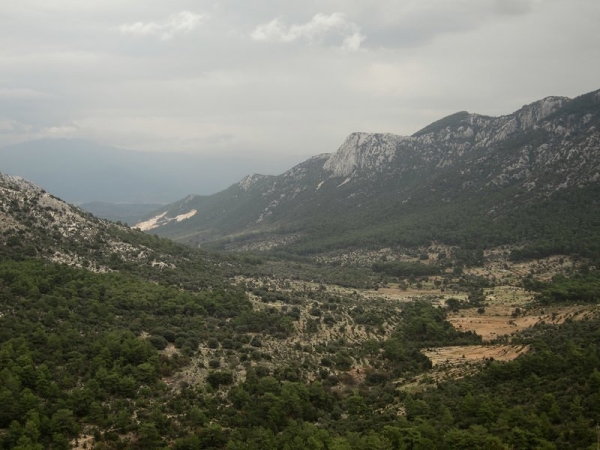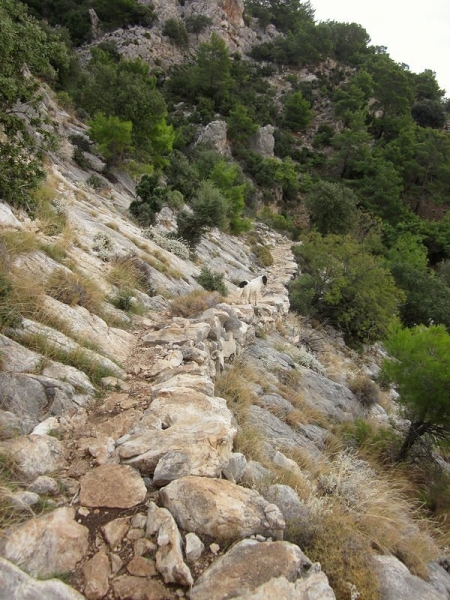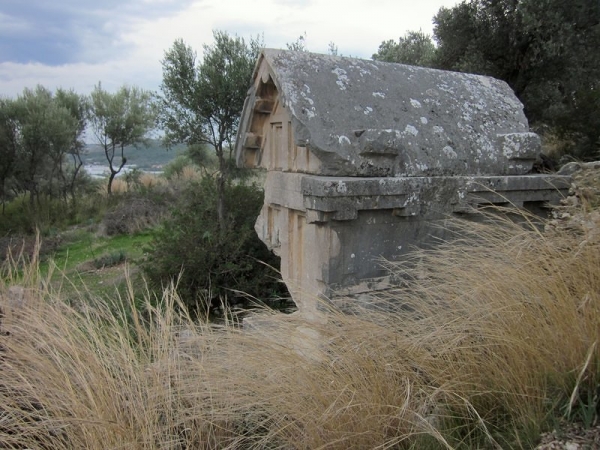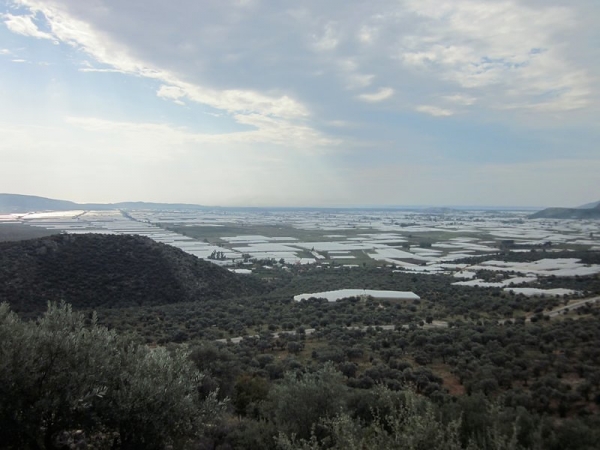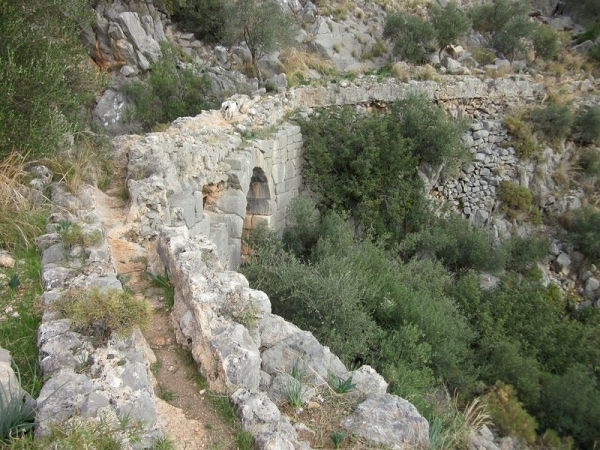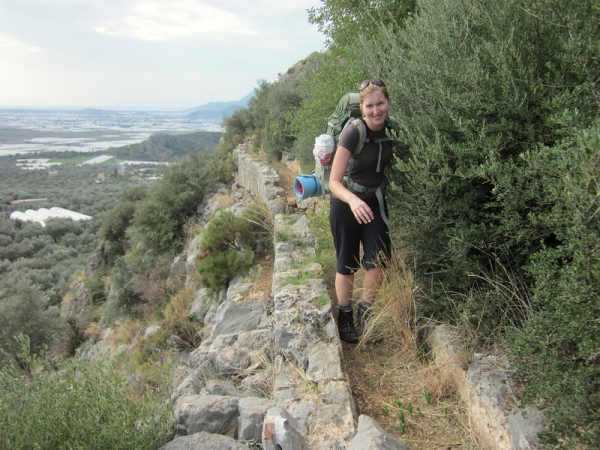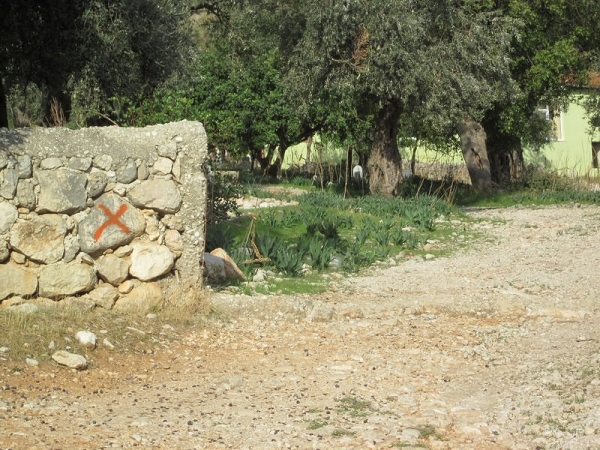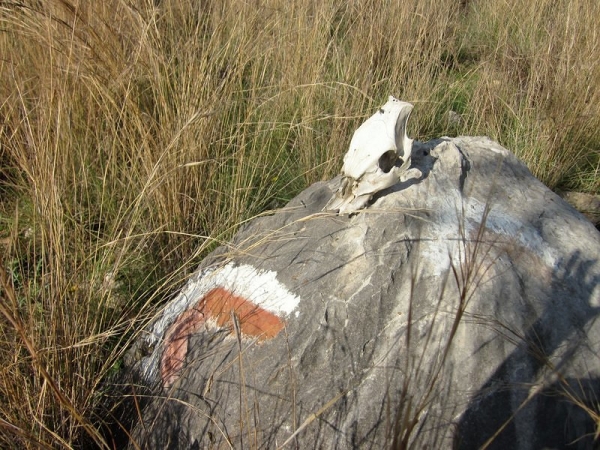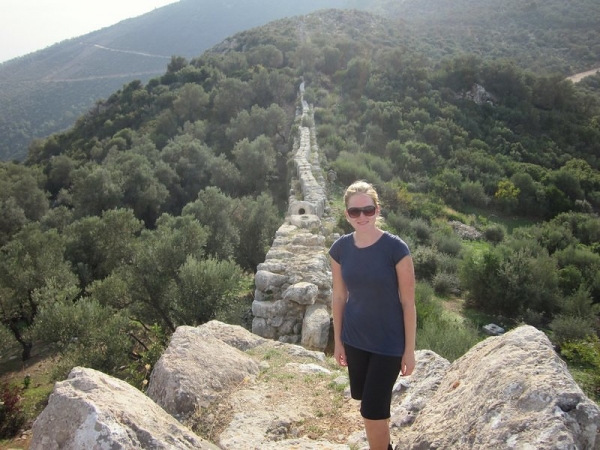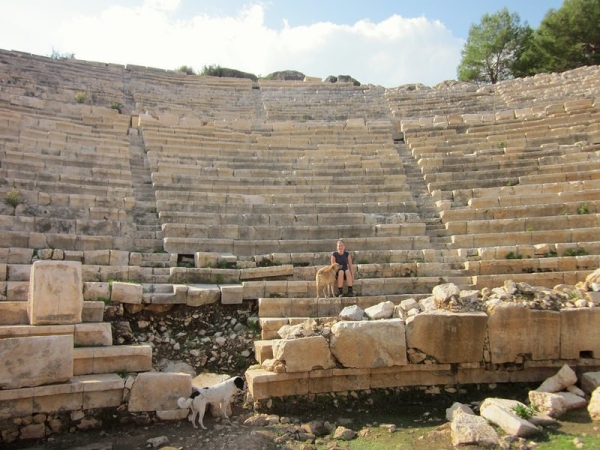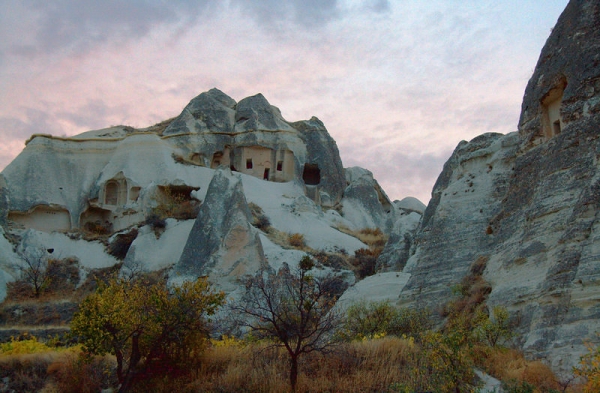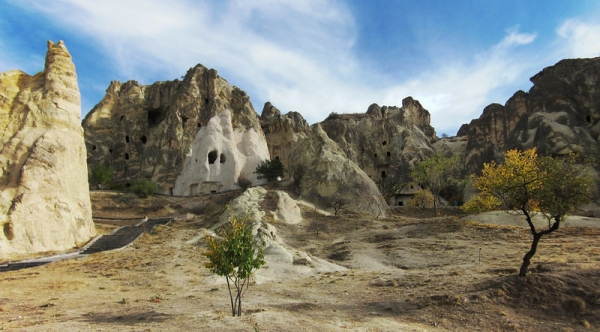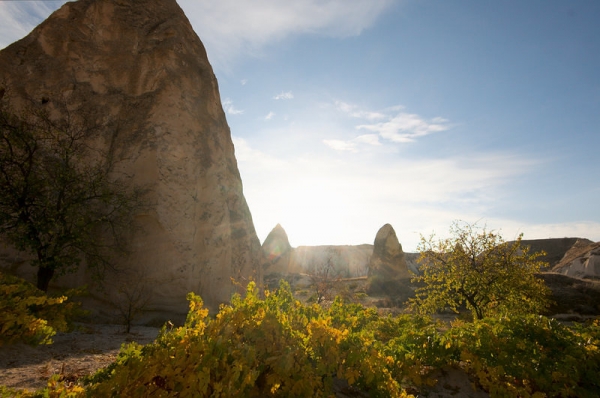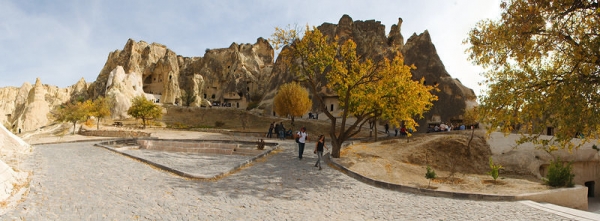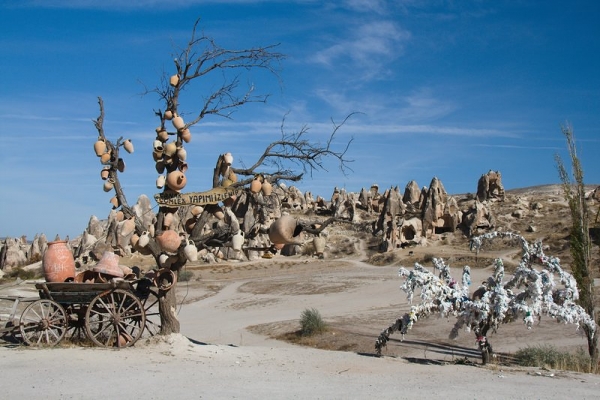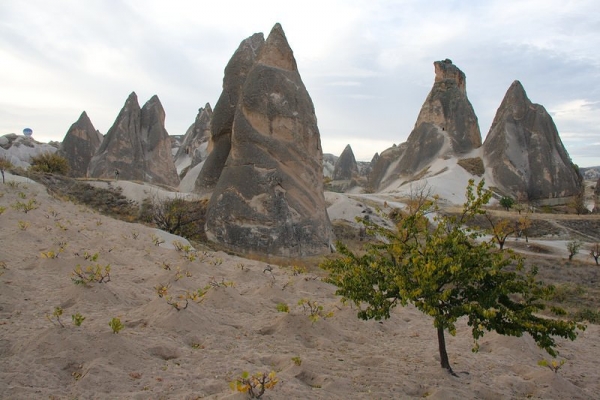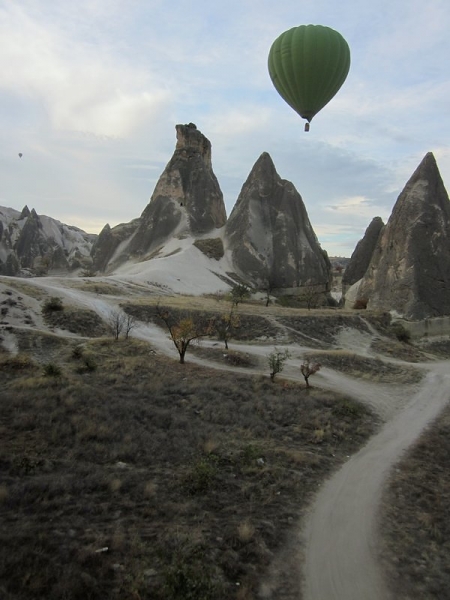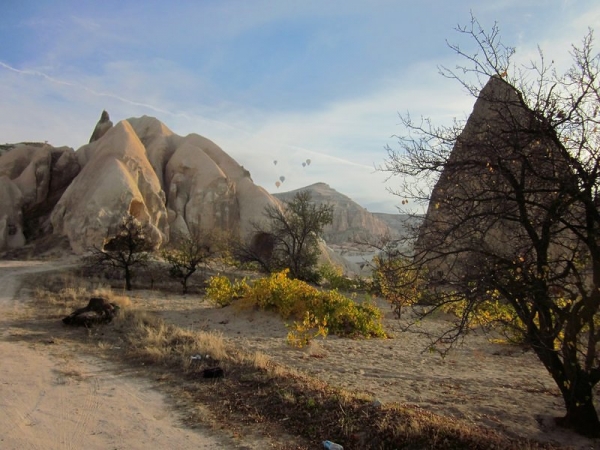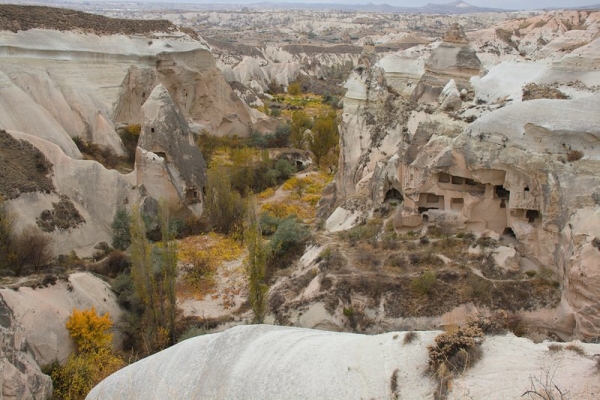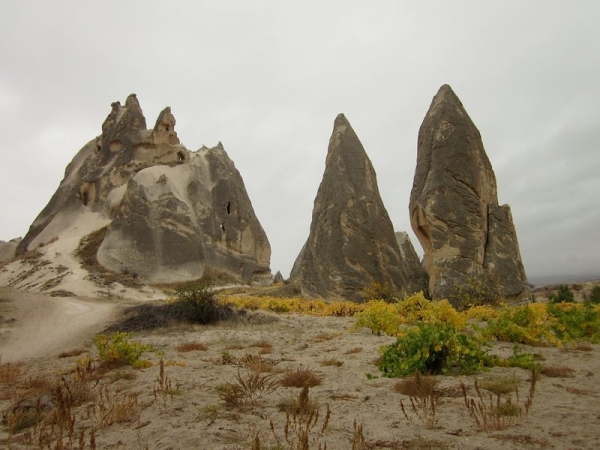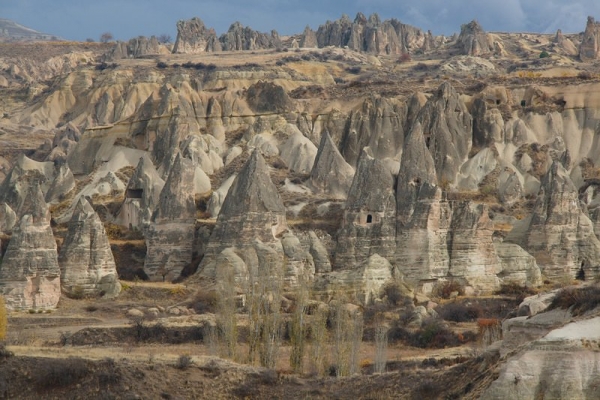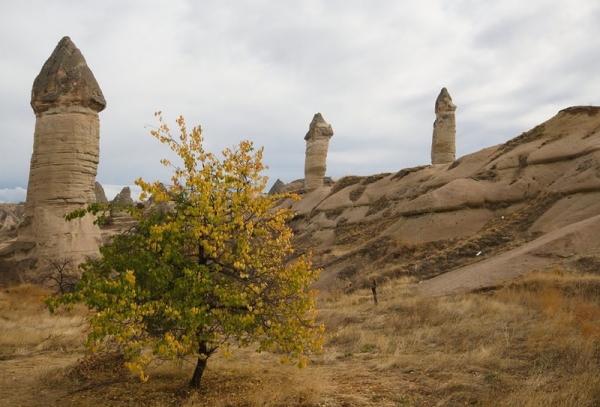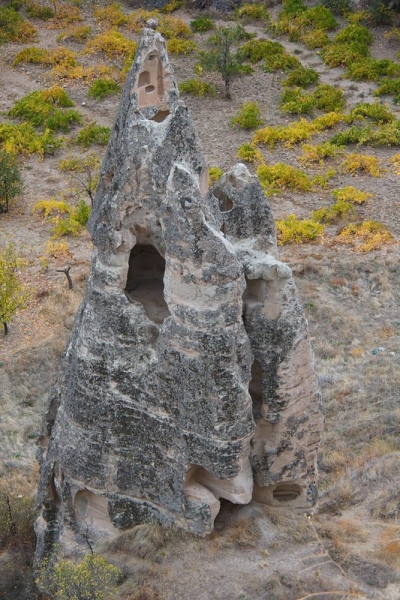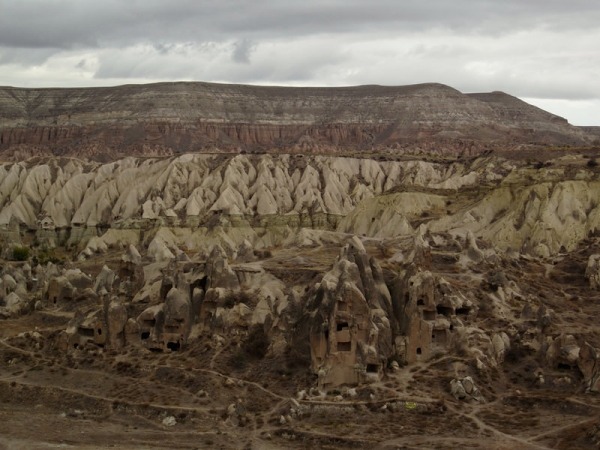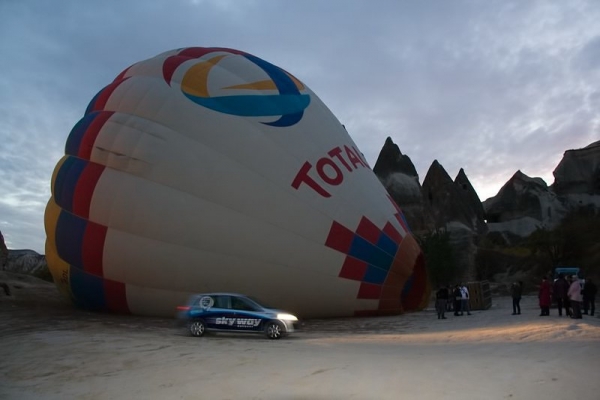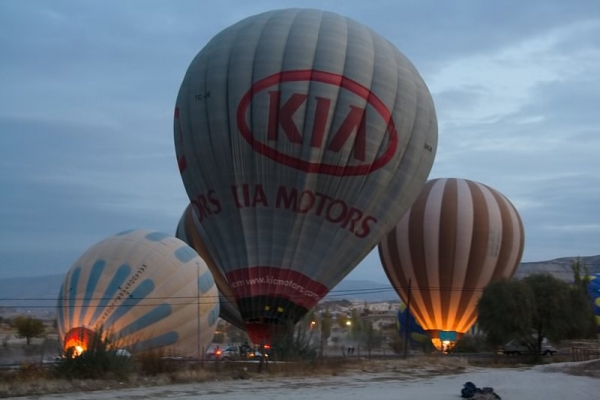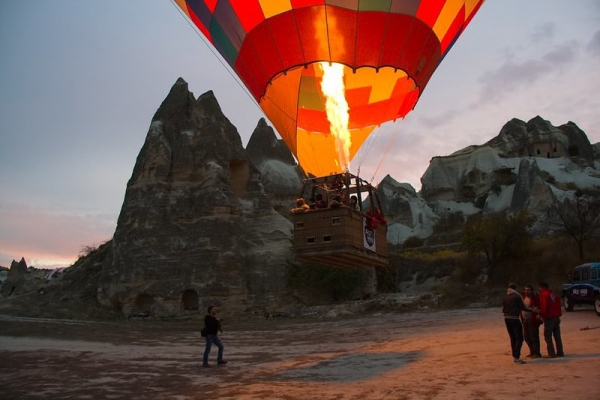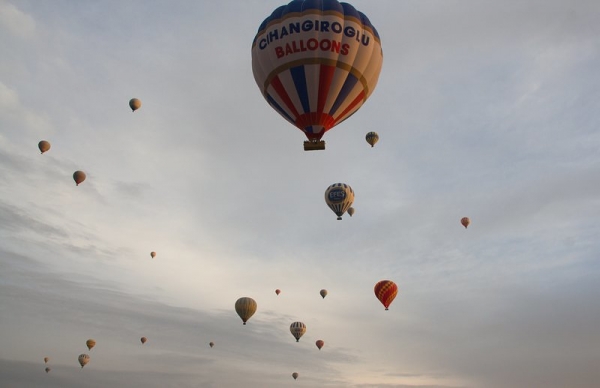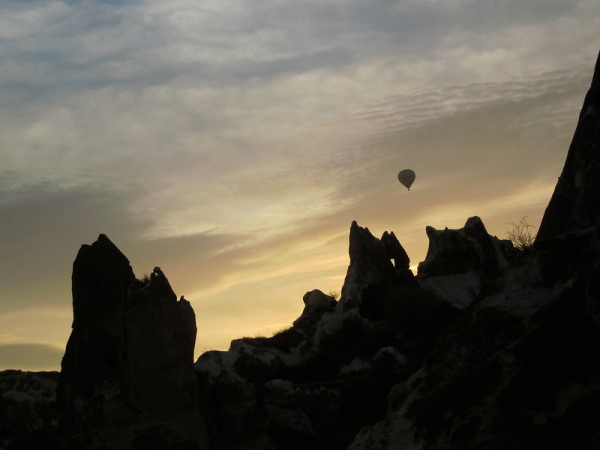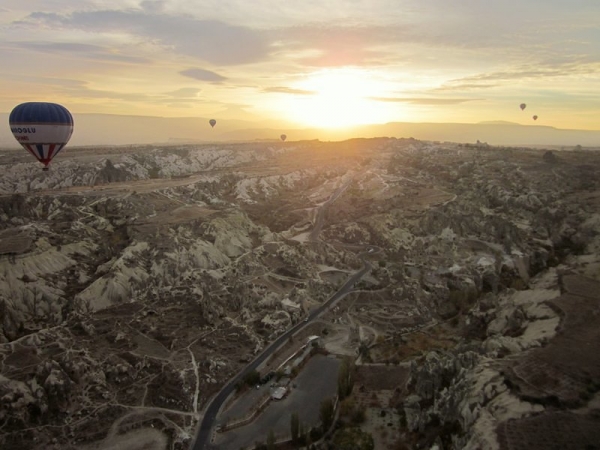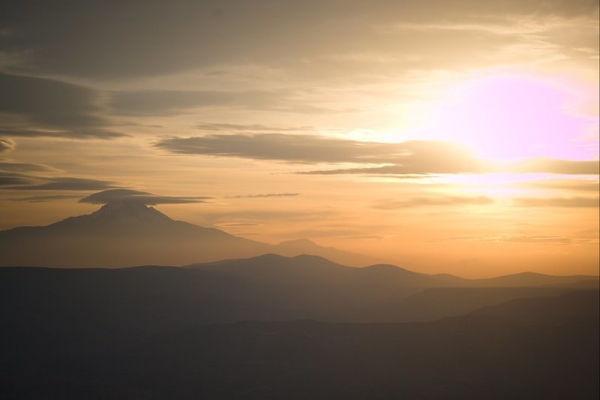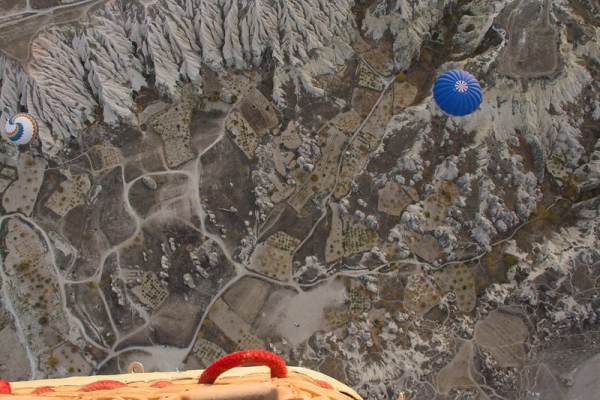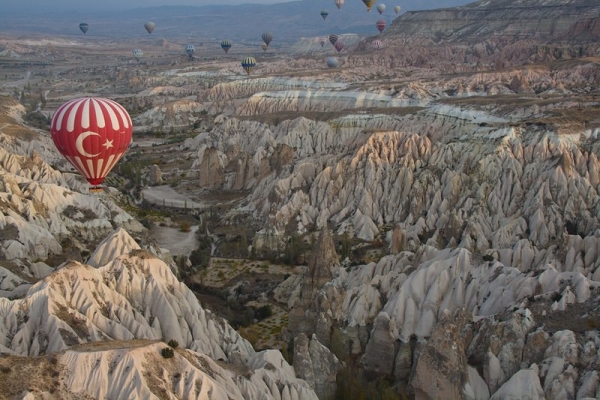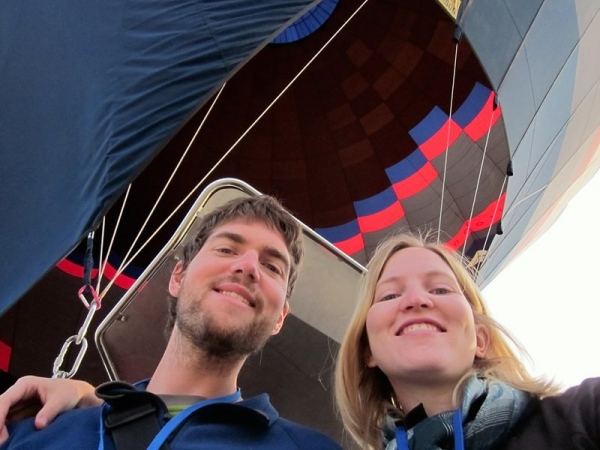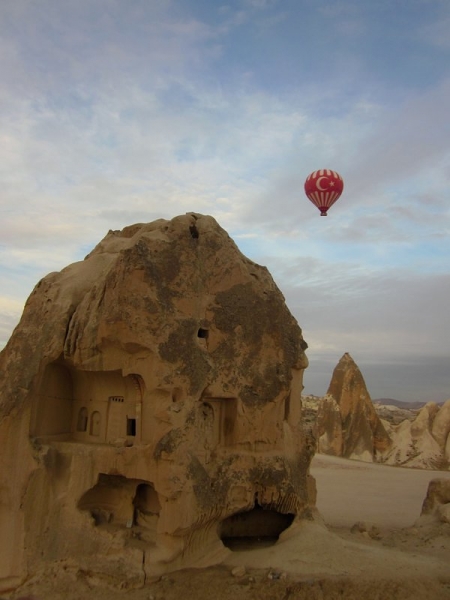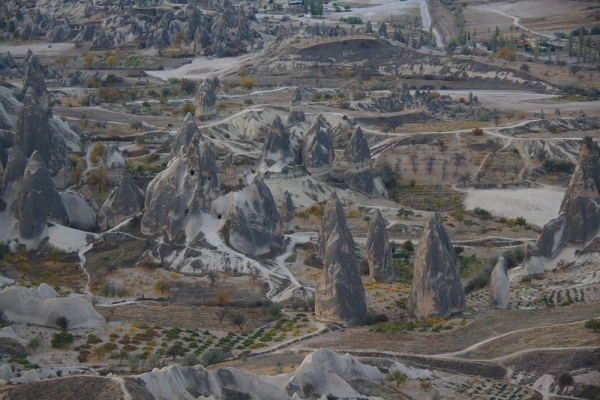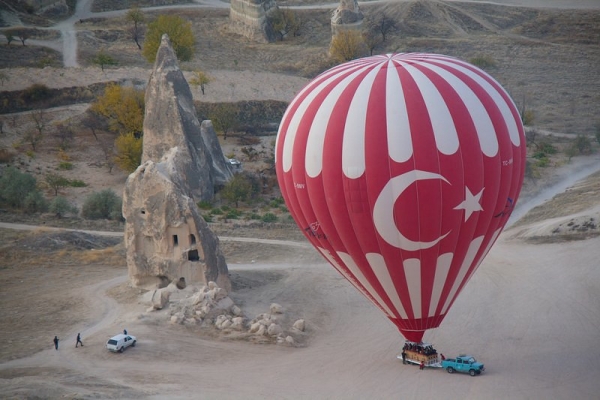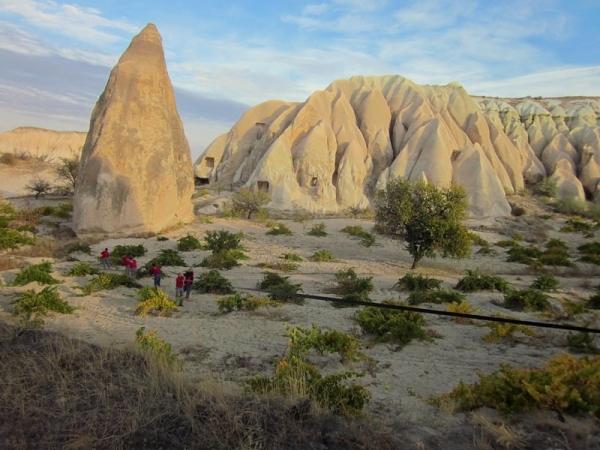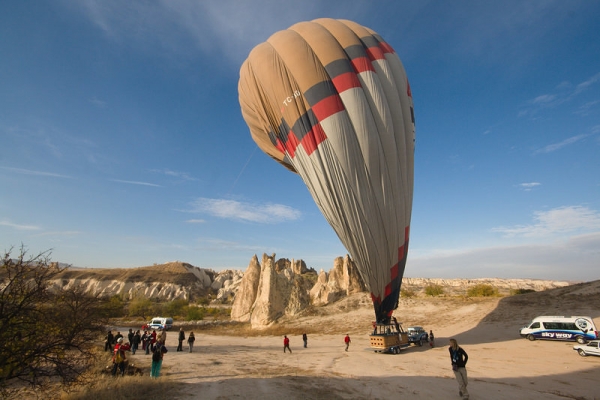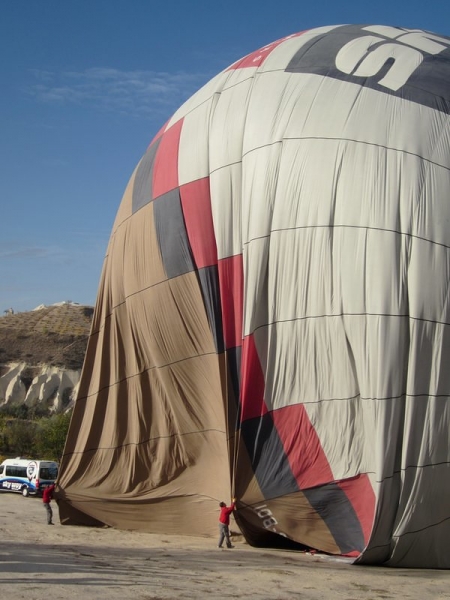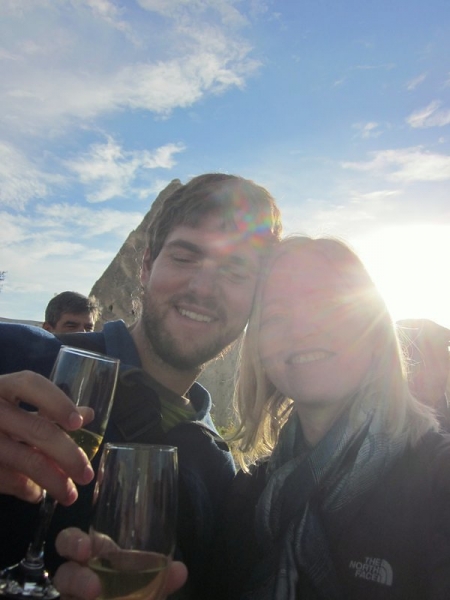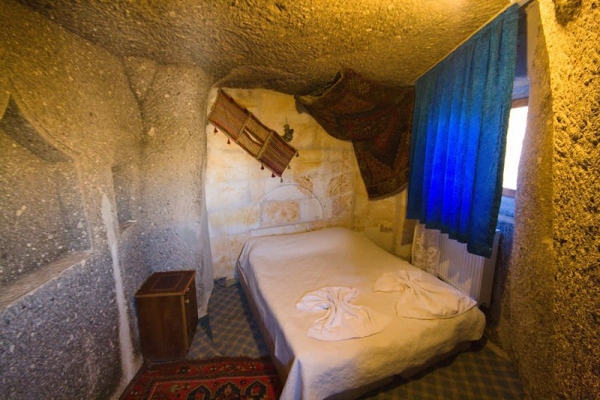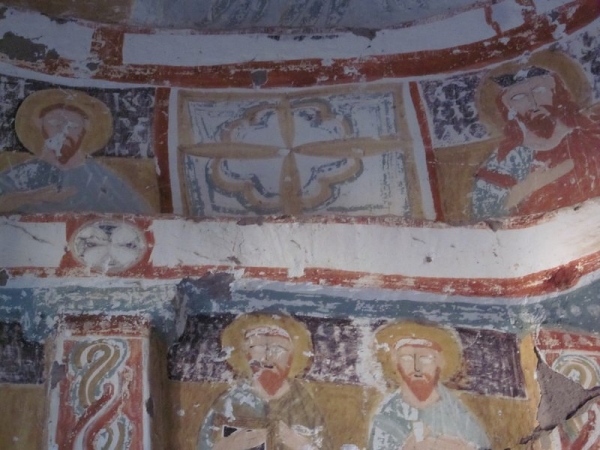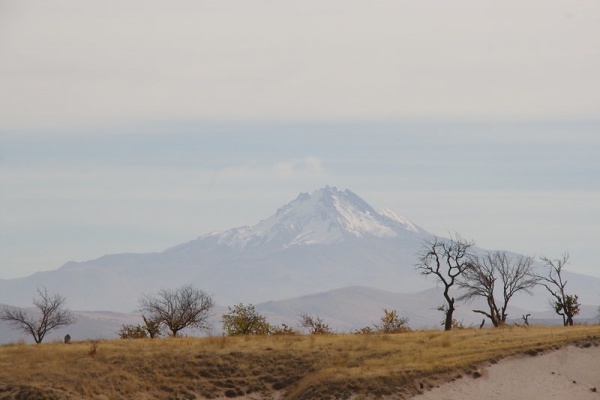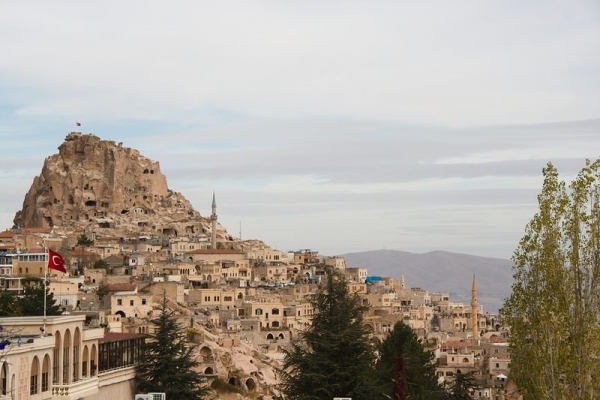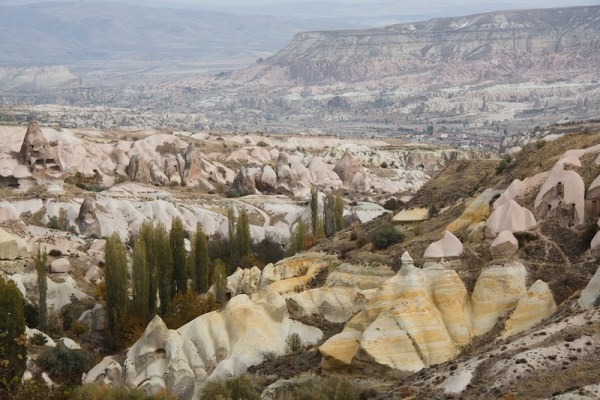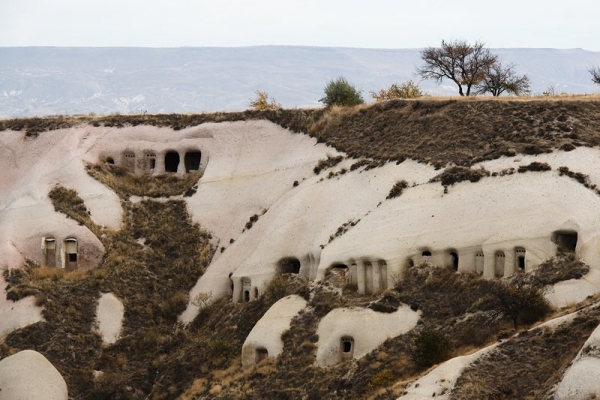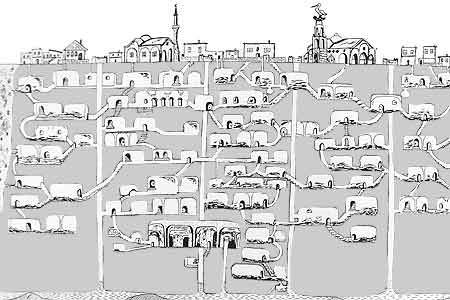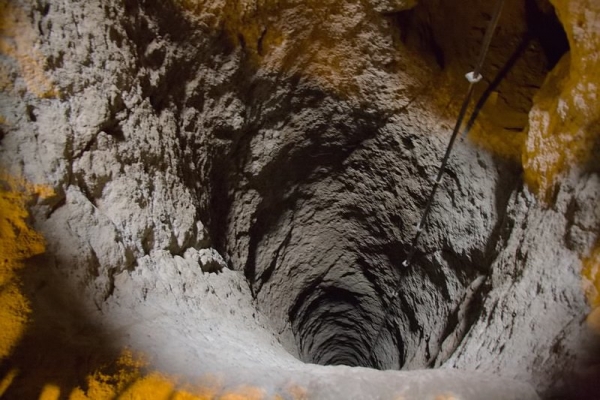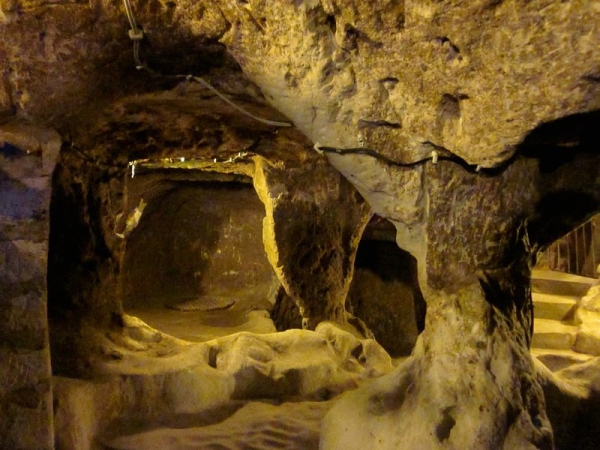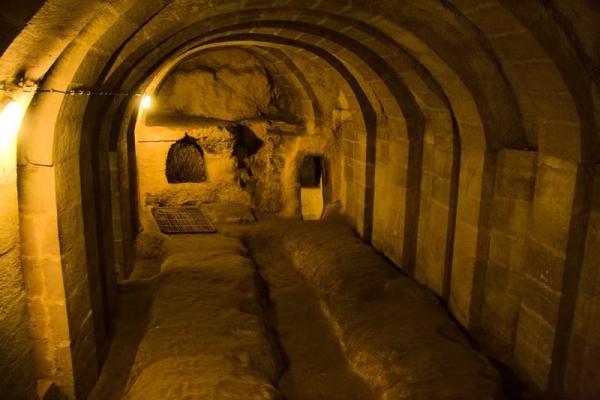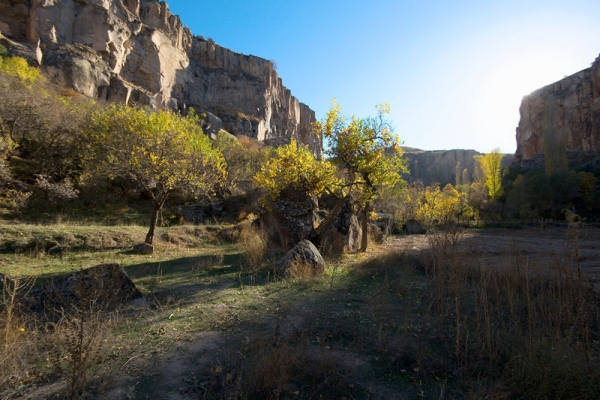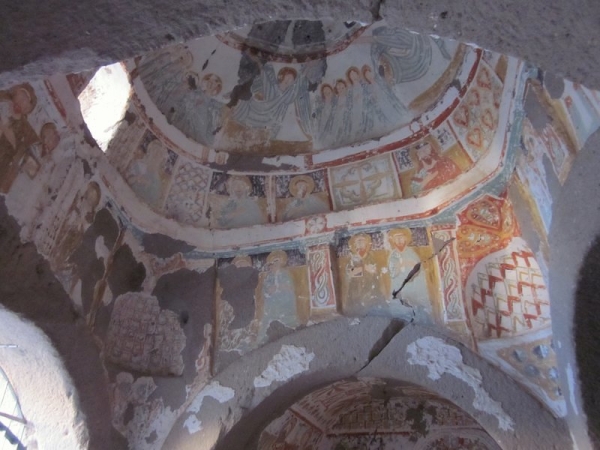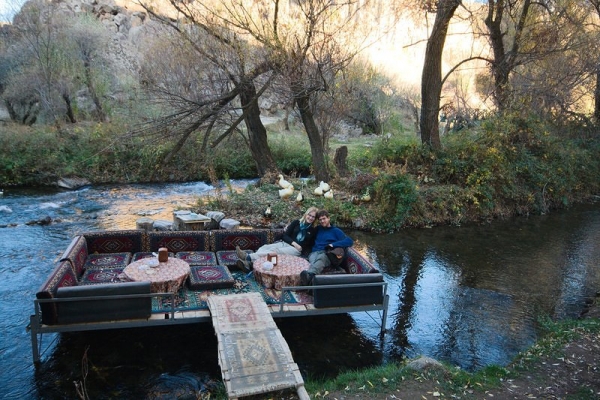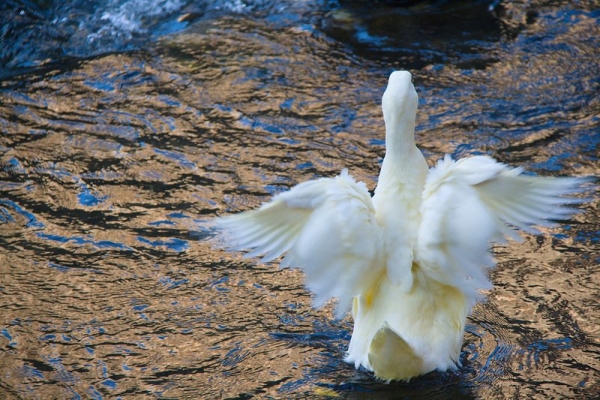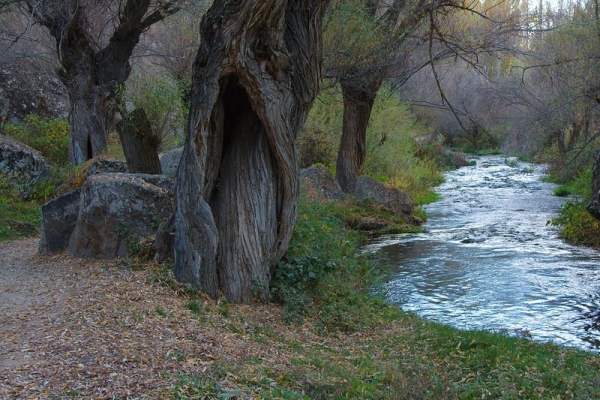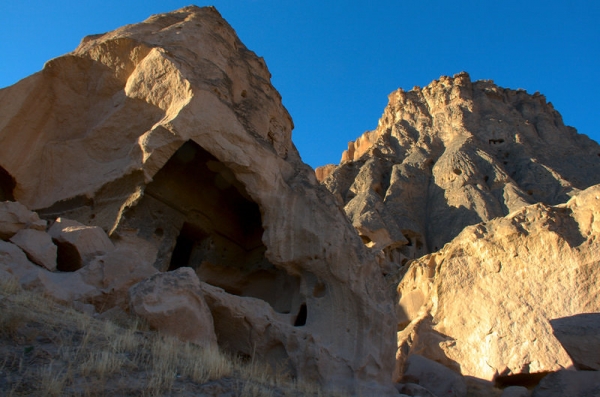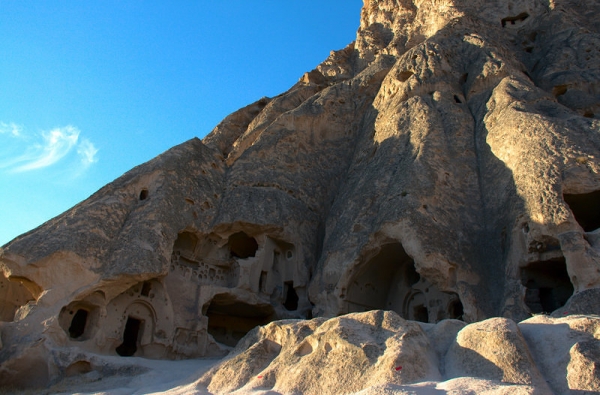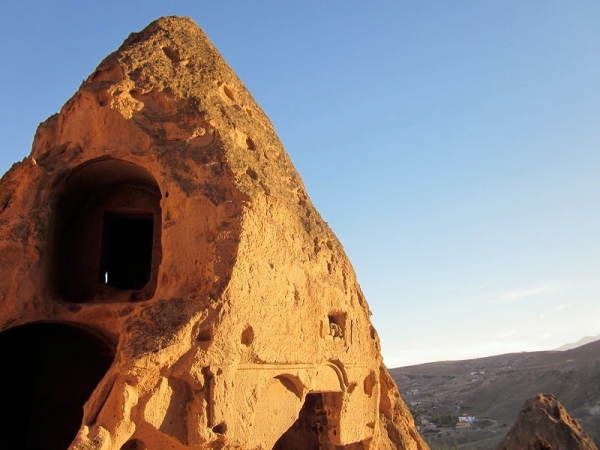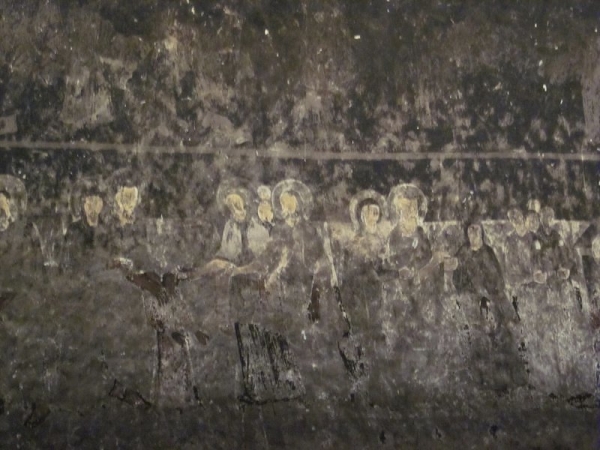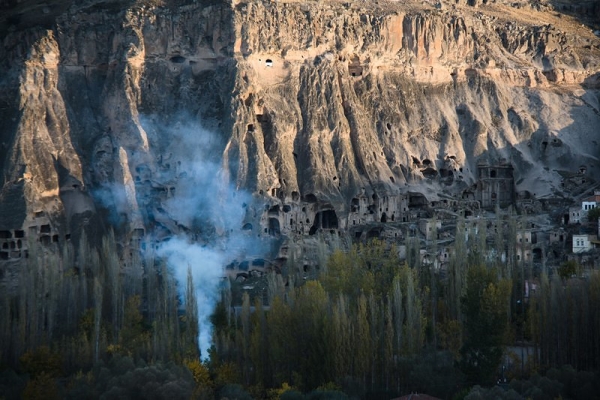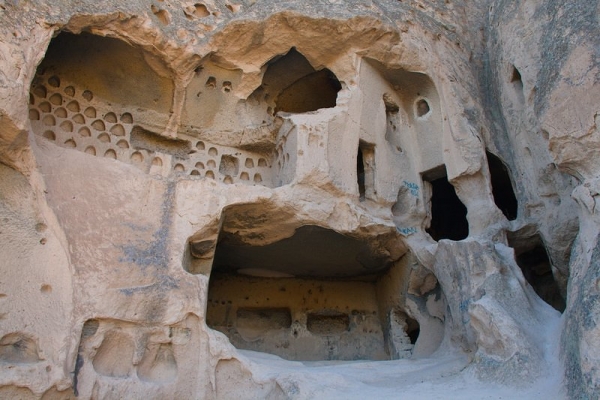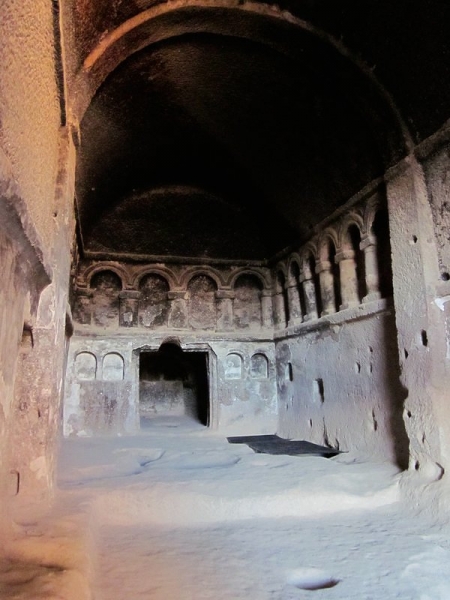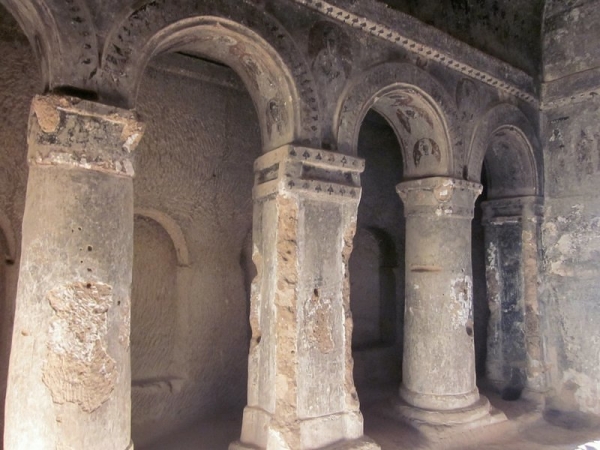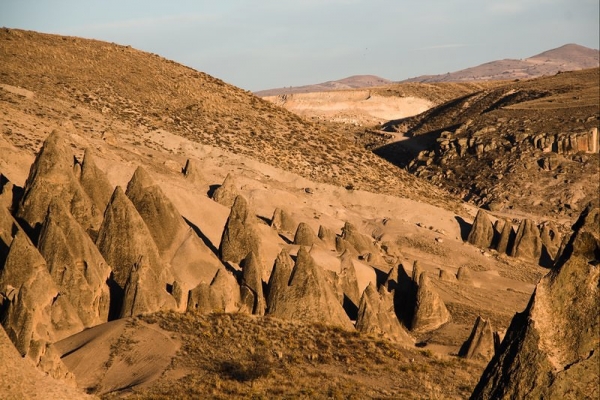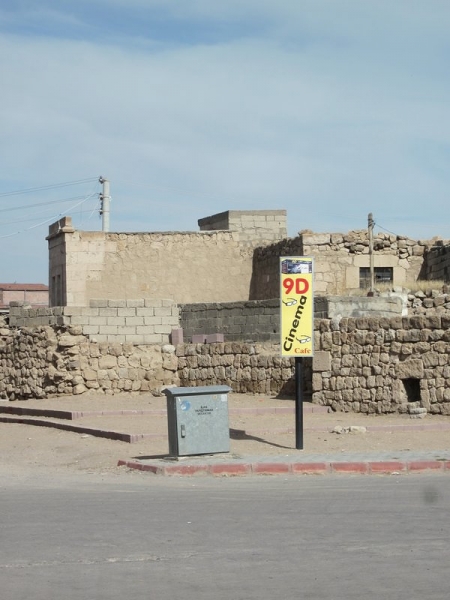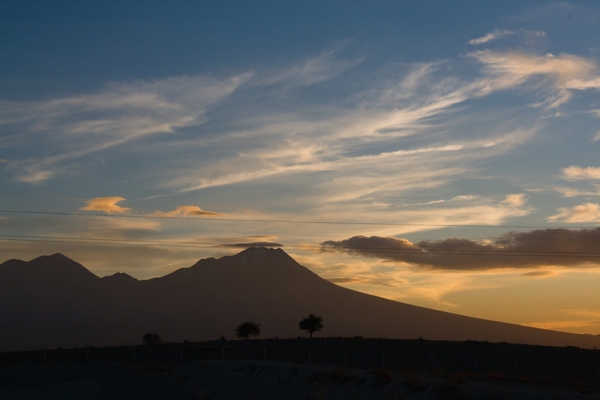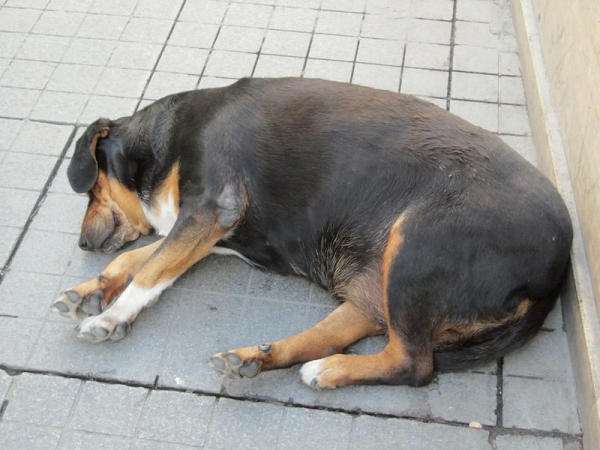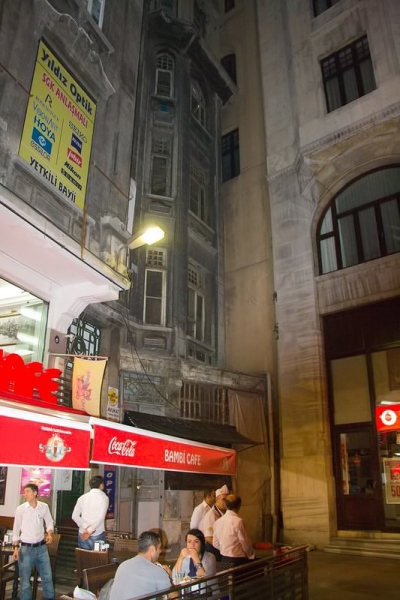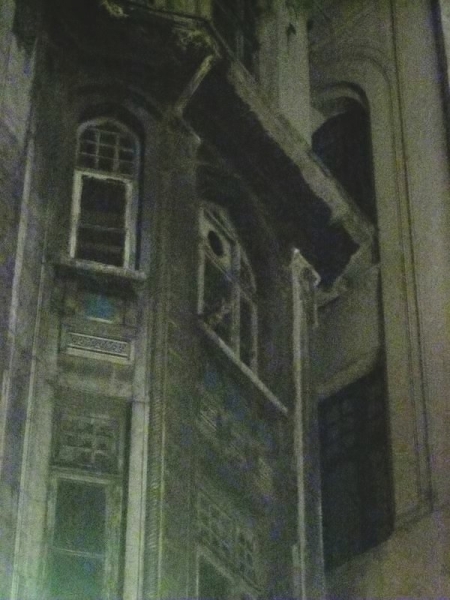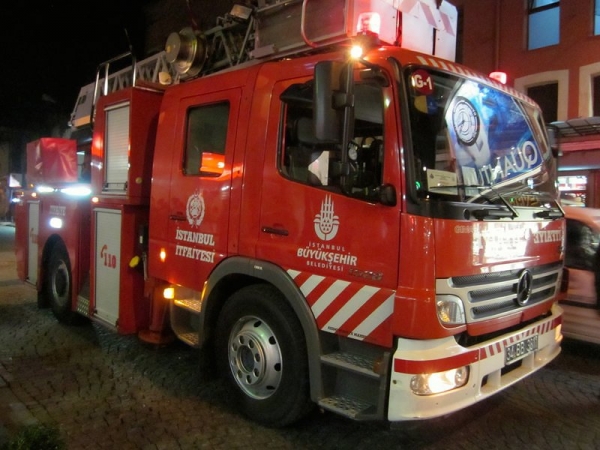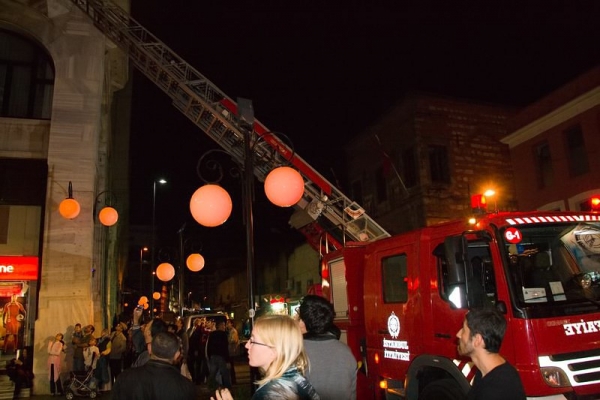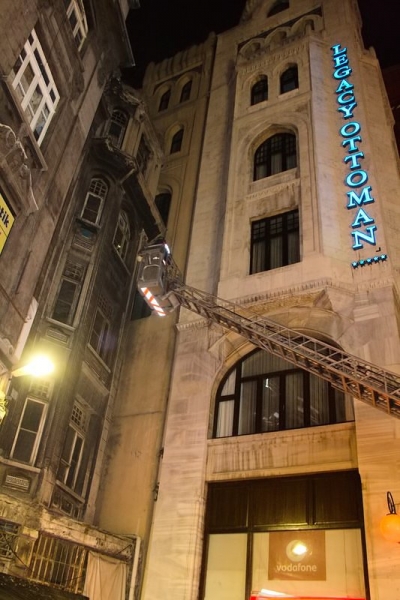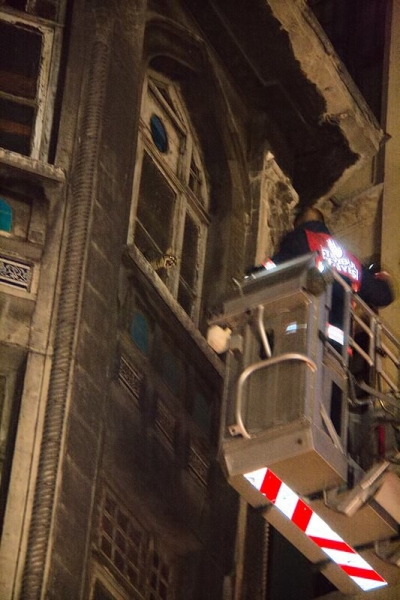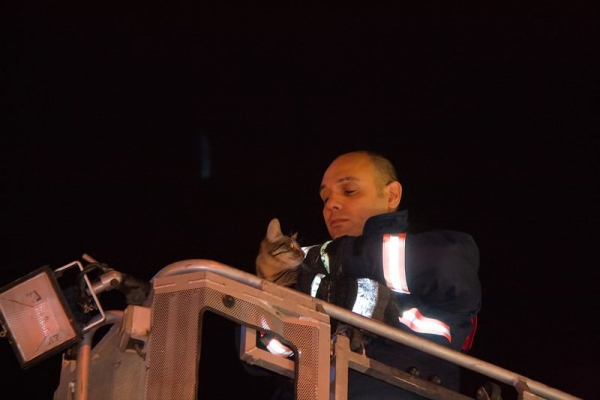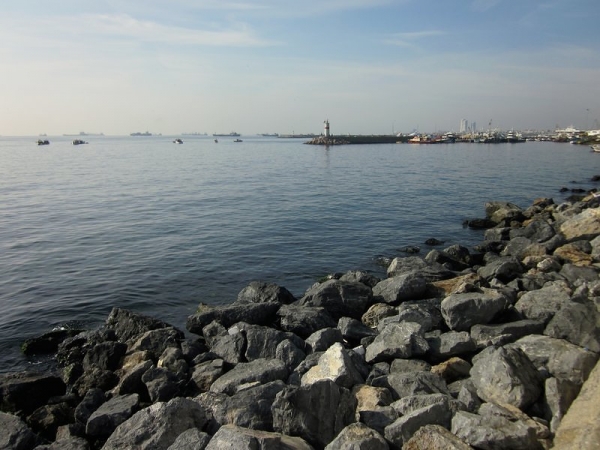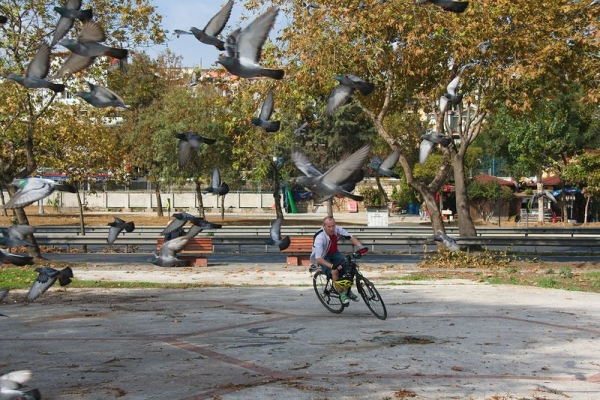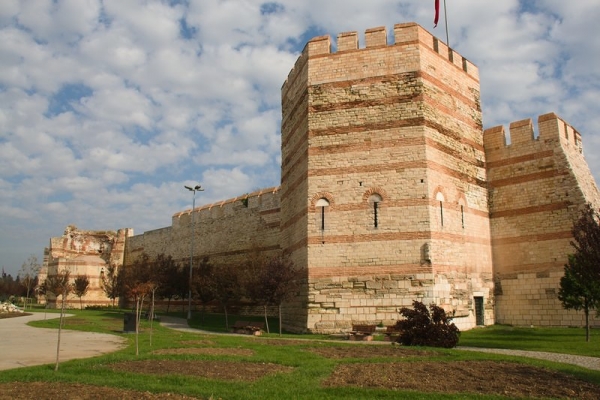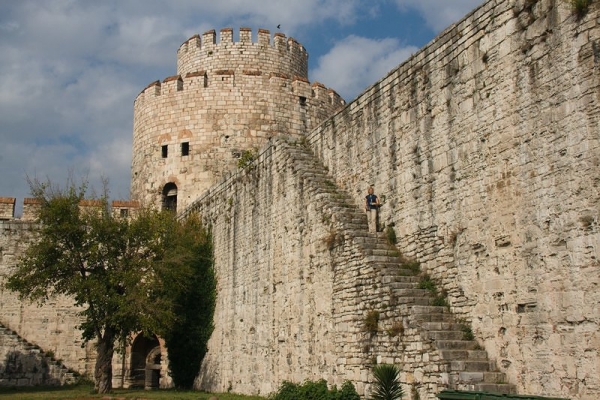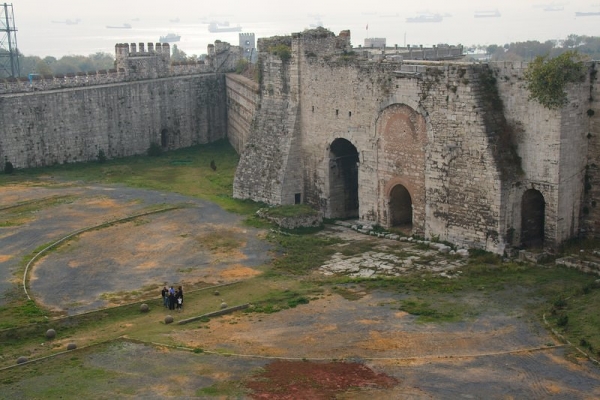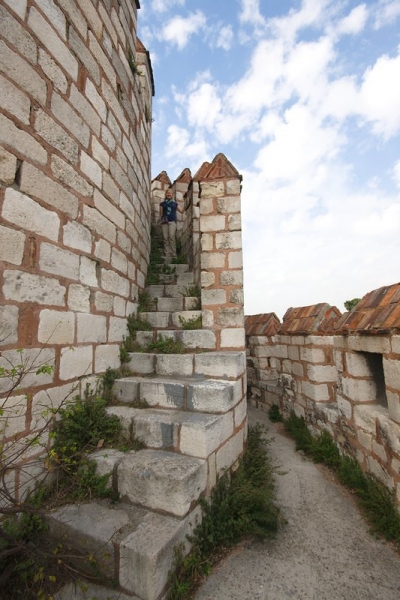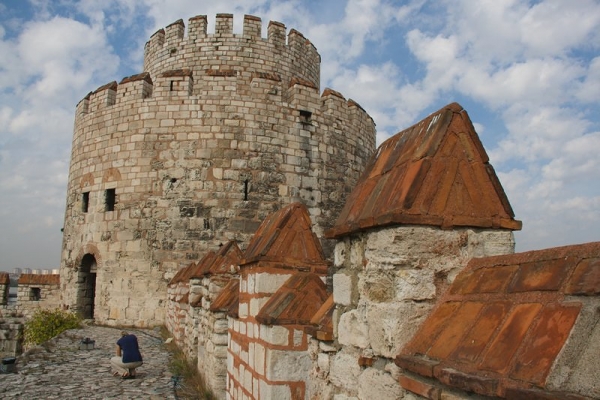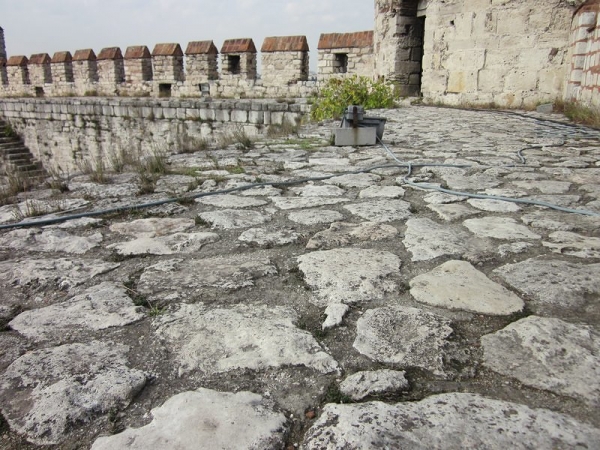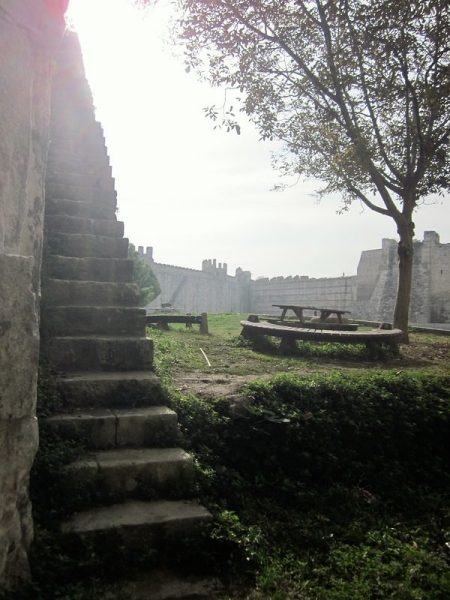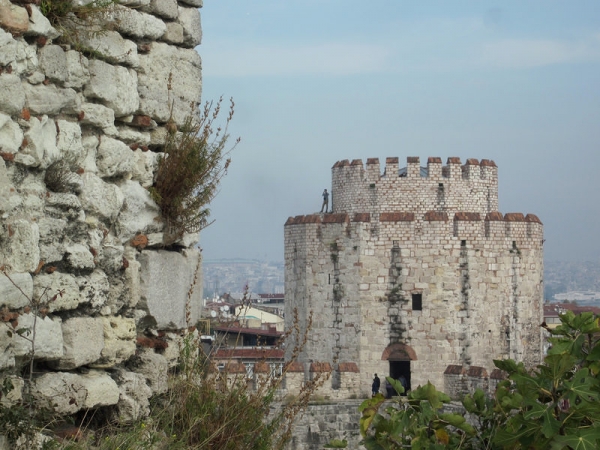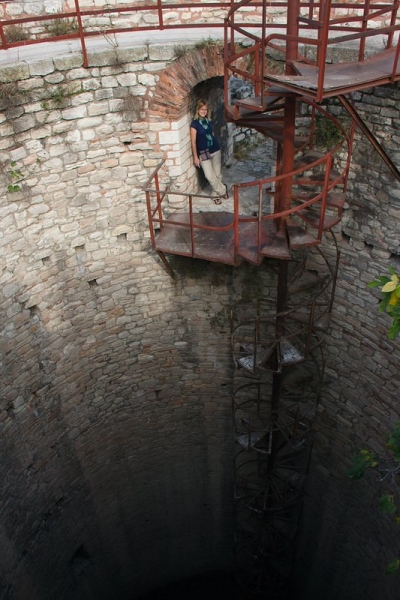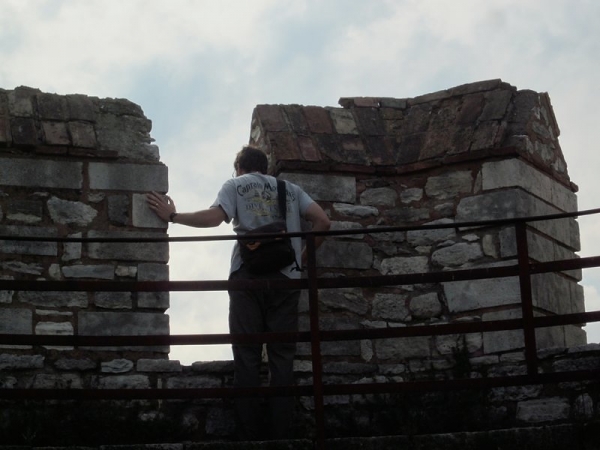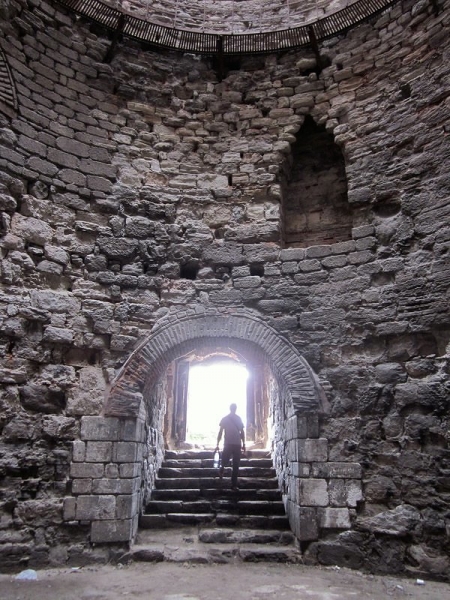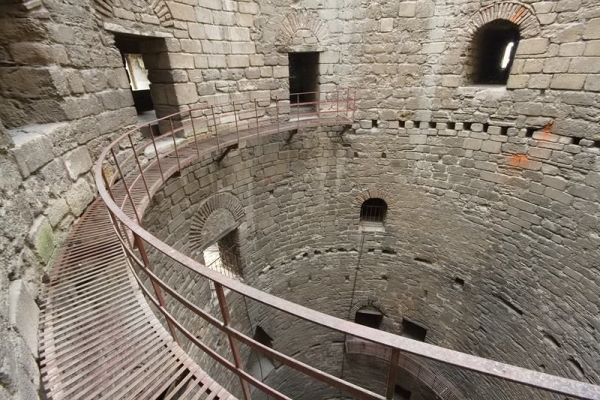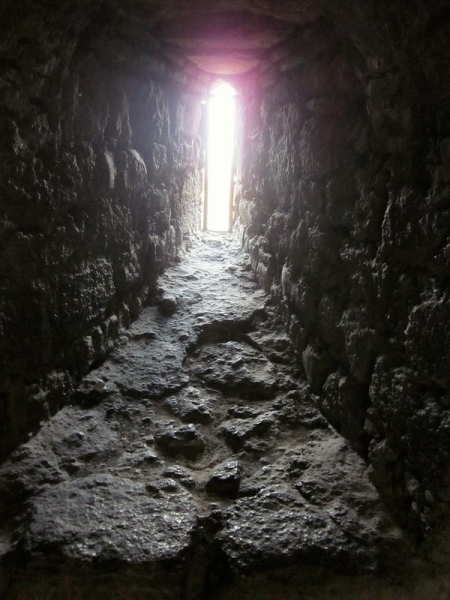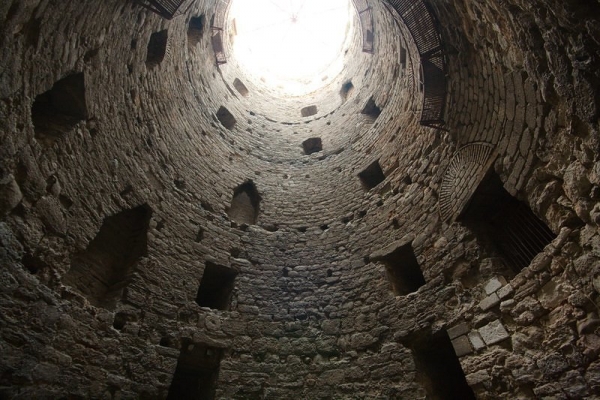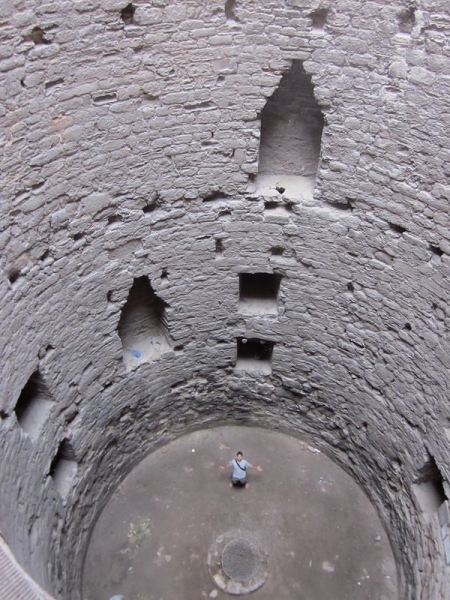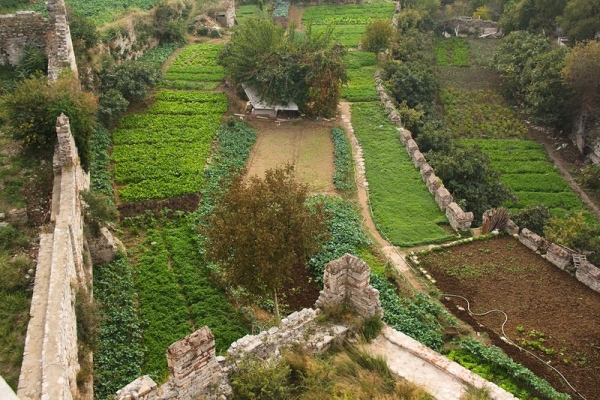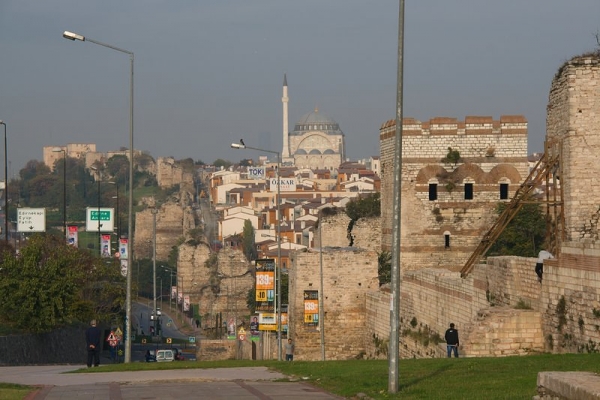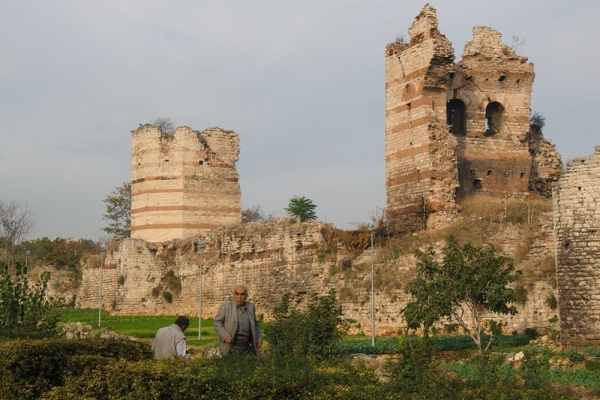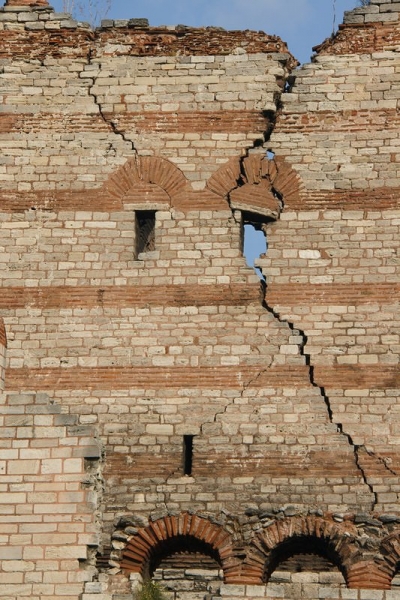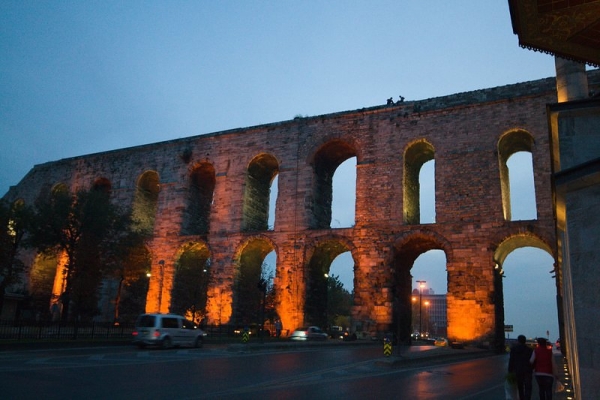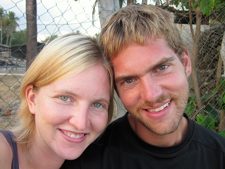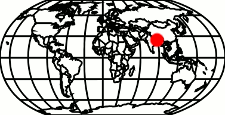Note: This is a lengthy post, so make sure you’re sitting somewhere comfy and you might even want to grab a cup of coffee. The two weeks that we spent hiking the Lycian Way in Turkey were such an epic journey that I really wanted to share the whole journal and experience with you. It’s worth the read, I swear, but if you’re pressed for time at least scroll through the photos – you won’t be disappointed. This is Part 1 of 4. (Click here for Part 2, Part 3, or Part 4.)
Day 1
Fethiye – cliff overlooking Blue Lagoon (approx. 2 km before Ölü Deniz)
13 km (5.5 hours)
After overnighting in a Fethiye hostel, we got up at a leisurely 7:30 and indulged in the free buffet breakfast. Knowing that we had some serious miles ahead of us, we had no problems packing away the bread, olives, eggs, cheese, and veggies offered. After thirds, we grabbed our stuff and set out in search of a grocery store to stock up for the trail. We purchased enough nuts, dried fruit, chocolate, cheese and bread for a day’s worth of meals (plus an emergency supply) and went off to find the trailhead.
Fethiye harbour
We knew that we had to climb the hill out of town, and we figured just about any path would be good enough. As we hiked up the steep road and met with the trail, we realized that we had missed the rock-cut Lycian tombs on the way out of town. We backtracked downhill along the actual trail (about 500 m) to check out the tombs, a little concerned about the significance of “losing” the trail before we had really even started.
Backtracked to see this…
View as we hiked out of Fethiye
To be honest, we had just about nothing going for us at the start… we were both sick and spewing snot, our throats were dry and scratchy from our colds, and we were sporting brand new hiking shoes. Yep… we did exactly what you should never do… we were starting the long distance trail with fresh-from-the-box, never been worn shoes. And yes, we do know better. However, we didn’t want to invest in new hiking shoes/boots until we knew for sure that the hike was going to happen. And we didn’t know that until the day before we started. So we decided they would have to get broken in the hard way. To top it all off, I had my period (I know, I know… too much information, but it’s pretty relevant here) – which meant not only did I get to deal with this monthly female gift in the wilderness, but painful cramps and menstrual migraines would be something of a guarantee for the next 3-4 days.
The trail started as a tough walk up a steep asphalt road and got easier as we turned onto a cobbled path through the forest. Already, we found ourselves breaking for some pre-emptive blister therapy on my heels – I had hotspots on both feet. I decided to try to beat the blisters to the punchline and put a Compeed patch on the back of each heel (a trick I learned from my time walking the Camino).
Nice path… nothing like what’s to come
We followed the red-and-white waymarkers as we hiked along. Since the Fethiye to Ovacik stretch is not officially part of the Lycian Way, it wasn’t included on our guidebook’s map or descriptions. All of a sudden, we realized we hadn’t seen a waymarker for a while and we instinctively felt like we were heading in the wrong direction (something about finding ourselves in the midst of a construction site probably tipped us off here). We retraced our steps and found the correct way, losing only 20 minutes or so.
We stopped in the village of Kayaköy for a quick lunch, paid the entrance fee to pass through the ghost town of the same name (required to continue on the trail), and climbed the hill amongst the shells of abandoned homes. It was definitely worth the 5 lira (per person, about $2.50 CAD) fee.
The town was populated by Greeks until the Greek/Turkish population exchange of 1923. Now it is full of run down but mostly intact houses and churches. It was designed on the hillside so that no house fell in the shadow nor blocked the view of another. We explored the ruins, snapped a few pictures, and carried on our way.
Abandoned village
Kayaköy church
Walking through the abandoned homes
There are a few paths that lead out of Kayaköy – we chose the coastal one that passes through Ölü Deniz. We descended a rocky slope until we found a flat patch on a cliff overlooking the Mediterranean and the Blue Lagoon of Ölü Deniz.
The view from the cliff
We still had enough daylight to continue, but didn’t want to pass up on the view. With slightly bruised hips and sore shoulders from our packs and a dull pounding in my head, we soaked in every drop of beauty we could until the sun set and the mosquitos chased us into our tent.
Our private clifftop sunset
It was totally dark by 5:30 (darn daylight’s saving time!), and we read by the light of our headlamps until around 7pm. We chatted away until we slowly drifted off to sleep, with Mike sharing some of the interesting facts he had just learned from reading the guidebook.
Night 1
At some point in the night, Mike woke me up to tell me we were surrounded by wild pigs. Thinking he just hadn’t fallen asleep yet and was still throwing out tidbits of information from the book, I thought nothing of it and told him “That’s nice. But I’m sleeping,” rolled over, and fell right back to sleep. What did I care that there were known to be pigs in the area we were hiking?
Sometime shortly after, I was abruptly awoken by a sudden, loud, angry snort about a metre from our tent. I sat bolt upright, heart racing and shaking. Mike’s earlier comment about being surrounded by wild pigs came rushing back as I instantly understood what his full meaning was. I felt my sleeping bag to make sure I hadn’t wet it from fright.
I sat there intently listening for more noises. I was keenly aware of the grocery bag full of food I so casually placed by my feet before bed. I tried to brainstorm objects I could throw at the boar when it inevitably came tearing at my feet, but was distracted by the image of getting repeatedly mauled by large tusks.
I racked my brain for wild boar safety advice, but, alas, the extent of my wild animal training was a bear safety pamphlet I had casually read in the Yukon (and even then, I could never remember when you want to back away from the bear, play dead, run at it (Ha! Like that would EVER happen) or make loud noises to scare it off). The pig must have entered stealth mode because I heard nothing more from it, and I slowly managed to drift off to sleep while images of tusks tearing through my flesh danced through my head.
Day 2
Cliff overlooking Blue Lagoon – Faralya
18 km (8.5 hours)
Needless to say, I felt more tired waking up on Day 2 than I did before I went to bed. I made Mike get out first and scan the area for signs of pigs. We ate a quick breakfast, treated ourselves to a well-earned coffee and tea, and packed up camp.
Early morning tea
We finished the rocky descent to the town of Ölü Deniz, dodged a half dozen parasailing salesmen (they weren’t actually parasailing as they launched into their sales pitches, though that probably would have been cool enough to sell us on it), and stocked up on more food for the day.
Parasailer near Ölü Deniz
Leaving Ölü Deniz, we started hiking the steep asphalt road that leads to the actual Lycian Way trailhead, just outside of Ovacik. There was no cover (why is it that trees and highways don’t get along?) and the sun was blazing (okay… the sun wasn’t exactly blazing. But it was out. It was actually only about 21 degrees C… I see now why they don’t recommend hiking this in the intense heat of summer).
Within no time, we were pouring sweat and out of breath. Lucky for me, I had the extra pleasure of a migraine headache (likely hormone-related, though the sun sure wasn’t helping me any). I stopped halfway up the hill, head pounding and heels already getting rubbed raw right through the plastic Compeed patches , thinking “What the hell did we just get ourselves into???? We’re not even on the trail yet!” Somehow, with Mike’s continued encouragement, we got up the hill and found the official start of the trail.
Let the fun begin…
In addition to our guidebook, we were using some WikiTravel notes I had downloaded for the bit from Fethiye to the trailhead. They had proved useful thus far, so we thought we would continue to use them. They advised you to carry 5 L of water per person for this first stretch of the trail, as the walk is hard, there is little cover, and water sources are limited. We carried a total of 7.5 L between the two of us at my insistence, and Mike made a point of acknowledging fresh water source after source as we passed them struggling under the weight of our packs.
To get to Faralya, we climbed up a cliff and then the trail snaked back down the cliff face. We scrambled down the steep path, keenly aware that one unbalanced step could send us careening down the rocky slope. The guidebook mentioned that this section was “not for people that are scared of heights” and our frequent exclamations of “What the f*,” “Holy s*!” and similar attested to this fact. At one point the trail had a 60% sideways slope. We kept commenting to each other that this was no Camino.
Climbing in the cliffs
More cliffs
We reached Faralya at about 4:15 pm, our “time to find a flat spot to camp” time. We kissed the level ground after our adrenalin-filled descent and bought food at the local store (the owner was kind enough to throw in a few free tomatoes after we paid a small fortune for our can of beans, chocolate bars and bread). We set up camp in a grassy field beside the mosque. The location was a trade-off… we would be blasted awake at 5 am by the call to prayer, but had access to actual public toilets for the night. This meant we could do our business in a porcelain hole in the ground, instead of digging our own. Extra bonus: We didn’t think we needed to worry about wild boars here. Exhausted and exceptionally nauseous from the migraine I had been struggling with all day, I skipped supper and was in bed by 5.
Day 3
Faralya – threshing floor of valley past Alinca
19 km (8.25 hours)
As we expected, we woke with the 5 am call to prayer and climbed out of the tent as soon as the sun started to rise. As we emerged from the mesh walls, we were greeted by a black-and-white dog wagging her tail at us. She watched us eat breakfast (hoping in vain for a few scraps, I’m sure) and pack up our tent. As soon as we had our packs on, she ran on ahead to the trail. I guess she wanted to be our guide.
Note: We had the option to descend the cliff face to the famous Butterfly Valley here in Faralya, but decided against it. The guidebook warned that the path was incredibly steep, dangerous, and not recommended so we weren’t going to try our luck (yesterday’s trail was challenging enough, and came with none of those warnings).
So the day’s hike started with yet another steep rocky climb into the cliffs. Our new canine friend followed us or, to be more accurate, constantly ran up ahead.
Whether it was last night’s migraine or the fact that I started the hike still wearing my toque (for all you non-Canadians out there, this is a winter hat), I felt like a zombie. My head was heavy and cloudy, my pack felt five times heavier than the day before, and I had to muster every ounce of strength I had to take each small step forward.
Mike was really worried about me as I had hardly eaten any breakfast (this is pretty much unheard of for me on a normal day, nevermind one where I’m about to hike 20 km through the mountains). I couldn’t bring myself to eat any more than a bite of bread, and I was carrying my half of the breakfast loaf with me. I also hadn’t had any water since about 3 pm the afternoon before and, despite knowing better, I couldn’t physically force myself to want any.
I wanted to quit. Seriously. I was done with this hike. I wasn’t having fun any more. However, in my foggy state, I didn’t realize I could actually quit by simply turning around and catching a ride out of the village that we had just left. I thought that the only way out was to get to the next village… which meant continuing to put one foot in front of the other. After about a half hour of this hell, having made incredibly slow progress, my head started to clear. I was warm enough to take off the toque, I had a few sips of water, and I managed to nibble on my bread. Within another half hour, I felt just fine and was definitely too stubborn to actually quit.
While I hiked, I found myself once again trying to recall any snippets of wild boar advice I had picked up along my travels. Surprisingly, after 28 years on this earth, I couldn’t think of one useful fact or tip. So I entertained myself by trying to come up with a few. For example, I figured that by putting on my vastly oversized rainjacket (purchased when I was a fair few pounds heavier), I was reducing my sex appeal – an effective wild boar avoidance strategy. Oh wait… that’s wild boy avoidance, not boar, isn’t it? Back to square one.
Our new canine friend stuck with us throughout the day. Before long, she had earned herself the name Rockslide. It turns out one of her most favourite activities in the world is chasing goats off cliffs. Every time she heard the tinkle of a goat bell, she was off running up the scree-filled mountainside, causing more than a few rockslides in her wake.
We forced ourselves to break for 10 minutes every hour to keep ourselves from tiring out. On one of these breaks, I was sitting on a large rock when Rockslide ran off. We heard her barking somewhere in the upper distance and before I knew it there was a goat leaping from the rocks above me, crashing down no more than two metres to my right.
This dog was downright dangerous. So we renamed her Havoc, since she seemed to cause it. As we carried on, we heard shepherds up ahead or behind cursing her as she disturbed their sheep and goats. We took solace in the fact that she wasn’t actually our dog – although she had been following us for hours, we had yet to feed or pet her (thinking that if we ignored her, she’d return home before long… how naive we were).
Rockslide (a.k.a. Havoc) chasing goats
As we passed through the village of Kabak Beach, we waved hello to a man in his garden and asked him if there was a market. Luckily, there was. And he was the owner. He walked us to it, unlocked it, and we restocked our bags.
As we were leaving, a man on the street asked us if we would have a çay (pronounced chai, Turkish for tea) with him. He had a restaurant/pansion about 100 m away and he insisted that it would be free. We agreed, and he gave us directions before running up ahead to change his shirt. The place was called the Olive Garden. We sat down on a deck with beautiful views of the beach and sea below.
The deck of the Olive Garden Hotel
He served us tea and finally helped Mike understand why the olives he’d been picking on the trail tasted so awful. It took Mike about 20 olives before he abandoned his attempt to eat them off the tree. As it turns out, fresh olives are basically inedible. They need to be soaked in water for a couple of weeks, changing the water every day or two. Then they need to be soaked in salt, water, lemon juice and rosemary (optional, but it makes them taste good) before they are eaten.
He chatted with us while we sipped our tea and then disappeared inside the kitchen. We figured we had breaked long enough (about 1/2 an hour) and there were only limited hours of daylight so we should be on our way. We went to find him to thank him for his kindness, but he wouldn’t let us leave just yet. He had been making fresh-squeezed orange juice from the oranges on his trees because he knew we were sick and needed energy for our hike. He handed us his card and with absolutely no pressure, asked us to think about him next time we were in town if we needed a nice place to stay. Havoc had settled down for a nap at the Olive Garden and as soon as we picked up our packs she was back on the trail, running up in front of us.
Hiking on the trail
Hiking on the edge of the world
View of the Med
We continued hiking up through the cliffs and found ourselves a great campsite. There was a view of the cliffs on one side and terraced green pastures on the other. We couldn’t believe how beautiful it was.
Our campsite
Home for the night
Havoc, enjoying the view
In great spirits!
Day 4
Threshing floor of valley past Alinca – Gavurağili
21 km (9 hours)
We woke up to find Havoc sleeping right outside our tent. This came as no surprise, since she woke us up at least a half dozen times barking in the night. We told each other that she must have been scaring off wild pigs to keep ourselves from getting too mad at her for the noise. She seemed to be favouring a leg as she walked, which to us meant further proof that she had tussled with some pigs to protect us. As soon as we had camp packed up and on our backs, she was running up ahead on the trail. We changed her name (for the last time) to Mayhem, because it seemed more feminine than Havoc.
Walking by some Lycian sarcophagi
After a gorgeous morning of hiking, we passed through the village of Sidyma. Near the mosque, there was a green open space with none other than a homemade couch. With cushions and everything. We couldn’t believe our luck… we were right on schedule for a break, so we peeled off our boots and got comfy.
Sidyma rest stop
Just as we settled in, an older woman walking by greeted us and invited us to her place for çay. We agreed, and somewhat reluctantly left the couch, replaced our boots, and followed her. She sat us on her porch and disappeared inside. Her daughter came out and used the opportunity to practice her English and find out where we’re from. We practised our very poor Turkish and chatted with her.
After a surprisingly long time, her mom came out with the tea (I say surprisingly because generally everyone has tea hot and ready to go on a burner.) Then we realized why it took so long. The tea was followed by a plate of hot and fresh burek. What a nice treat! She and her daughter joined us for tea, and she sat embroidering some head scarfs while we chatted. Mostly, she seemed content sitting in silence, happy to just have us there. She wrapped one of the scarves around my head and told me I was a proper Turkish woman now. We offered to pay something for the tea and burek, but she refused.
“Now you’re a proper Turkish girl”
After Sidyma, we got a little lost but quickly found the trail. We caved in and shared a half loaf of bread with Mayhem. She had been with us for over a day and a half, hiking probably twice as far as us (with all her running ahead and goat adventures) and hadn’t had anything to eat. We still expected her to turn back soon, but we weren’t heartless… at least it would take the edge off her hunger. We bought ourselves some fermented black carrot juice to try, but ended up pouring it out in a pasture… it’s probably the nastiest drink I’ve encountered on my travels (Guatemalan OJ with raw egg included).
If you can’t beat ’em, join ’em – Mayhem didn’t seem to be going anywhere
Seemed like a good idea at the time
The day was full of steep, narrow trails on loose rocks. During one of the breaks, I peeled off my socks to find my first official blister. The skin on my heels was basically shredded – the Compeed long gone and the blisters waaay past being able to thread them. These new boots were sure ravaging my feet quickly.
Fields
Um…wow
Nearing the end of the day
We spent a long day walking and decided to end at a Pansion in Gavurağili. It was time to get some laundry done, so we splurged on a room. Wet-wipe baths were getting kind of old as well, so we took a nice long hot shower to refresh ourselves. The place was called Candan’s Garden and while the owners spoke nearly no English, they were incredibly friendly and helpful. For 70 lira, we got a private room, hot shower, laundry, supper, and breakfast. Mayhem was locked out of the compound when we entered the gate. We figured she’d probably want to head home anyways.
We had a delicious supper of eggplant, potatoes and peppers in yogurt and oil (with lemon and sumak), salad, bread, and pomegranates. I tried to eat as much as I could because Mike was concerned I wasn’t eating enough. He was right… the weight was falling off me, but I was having a hard time consuming enough calories in a day before my stomach filled up.
During the meal, we were questioned about the dog. They asked if she was from Faralya. Surprised that they knew this, we told them she was. They laughed and said that this was the sixth time they’ve seen her follow hikers from there. Guess we weren’t so special after all.
We stayed up reading later than we could manage in a cold, dark tent (’til almost 10 pm!). We had the luxury of electric lights and enjoyed every moment of comfort and luxury that the bed afforded us.
This is Part 1 of 4. Click here for Part 2, Part 3, or Part 4.
